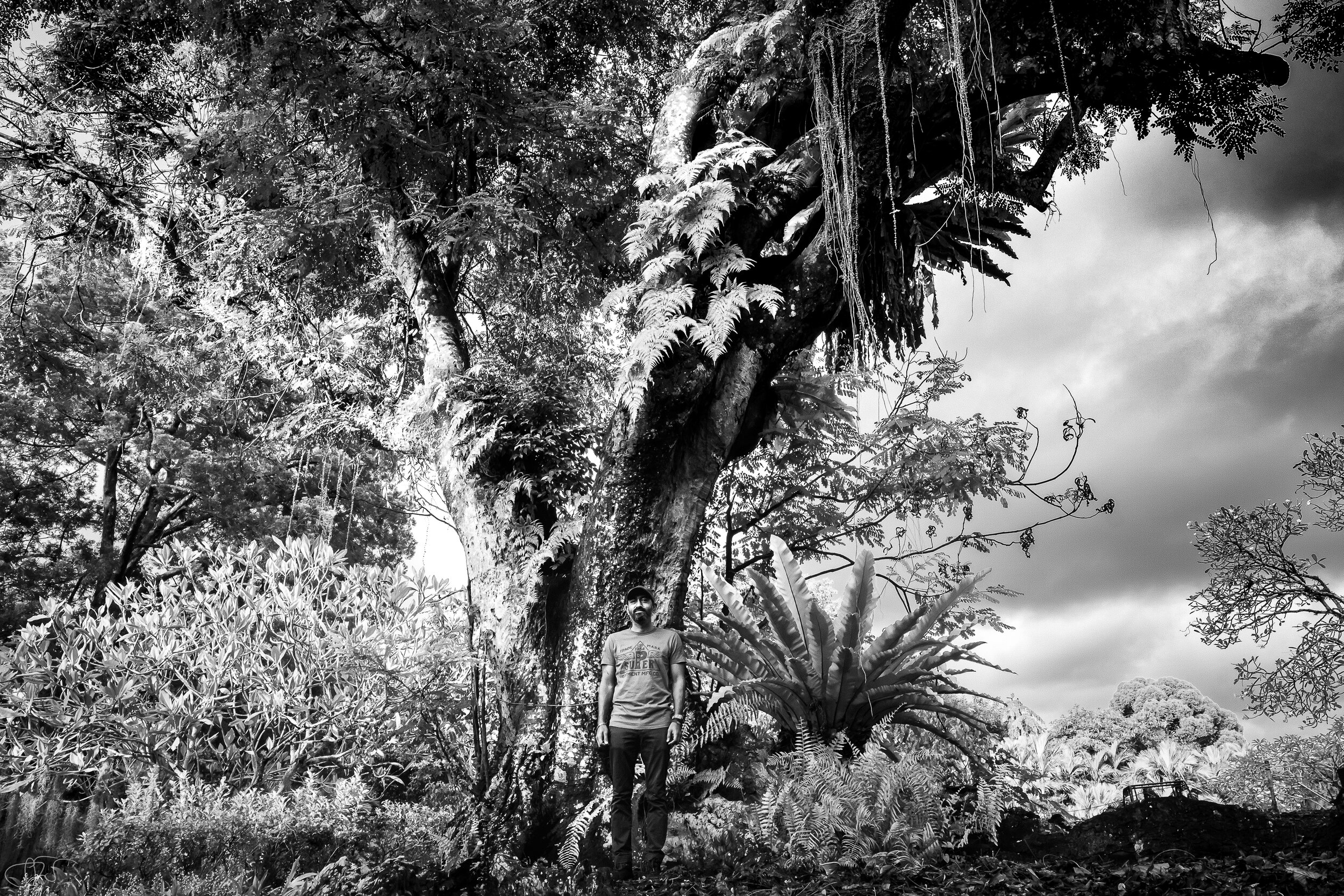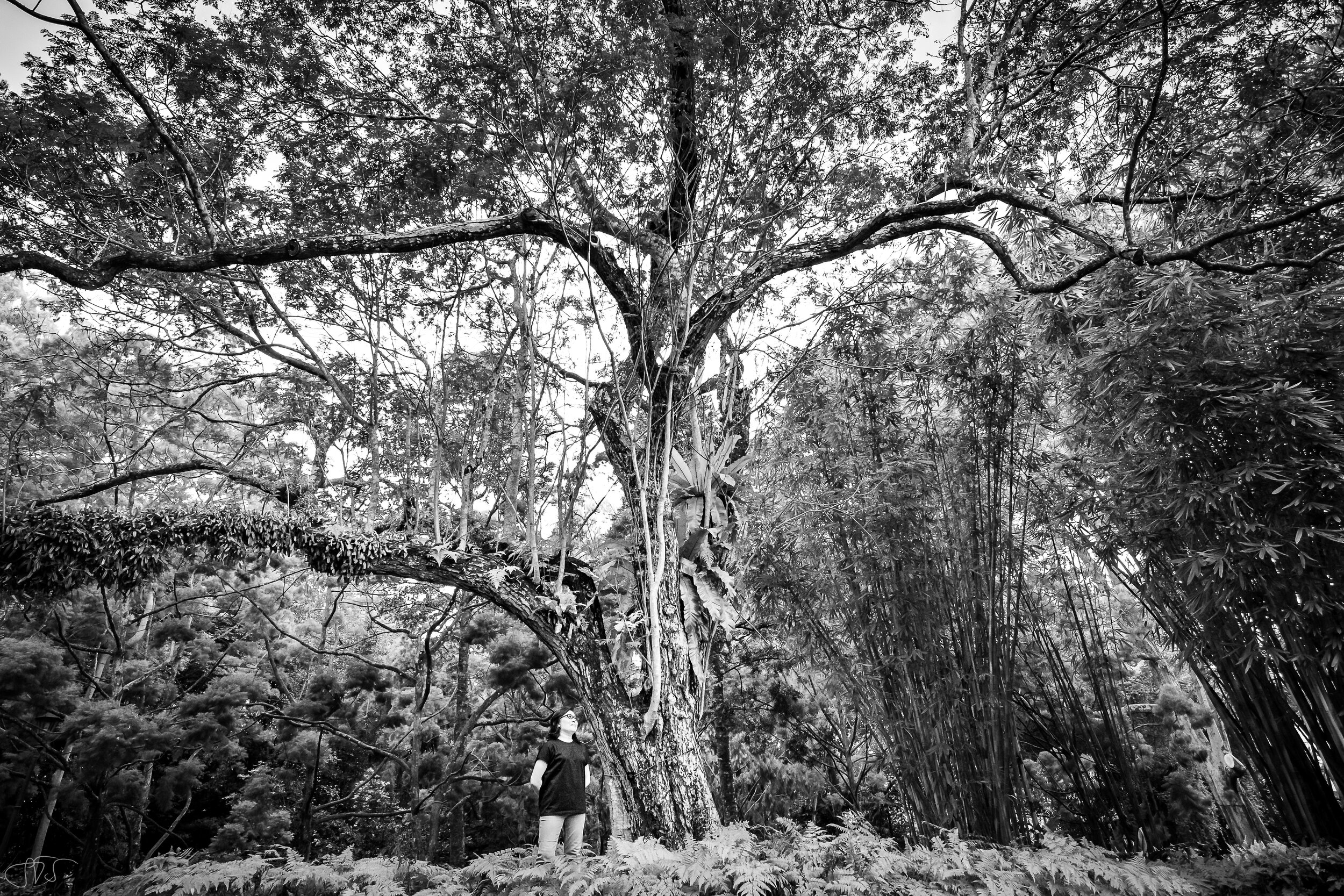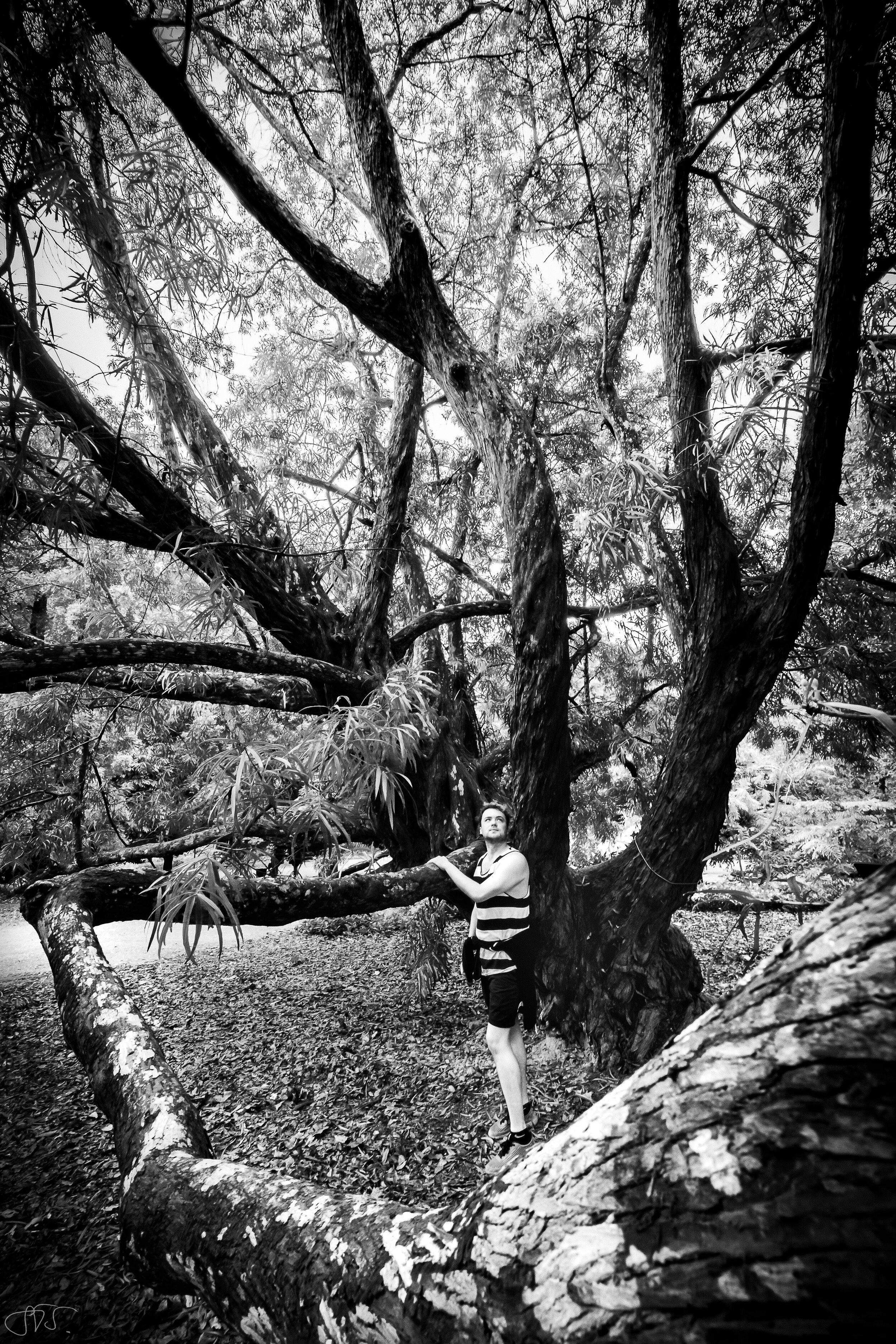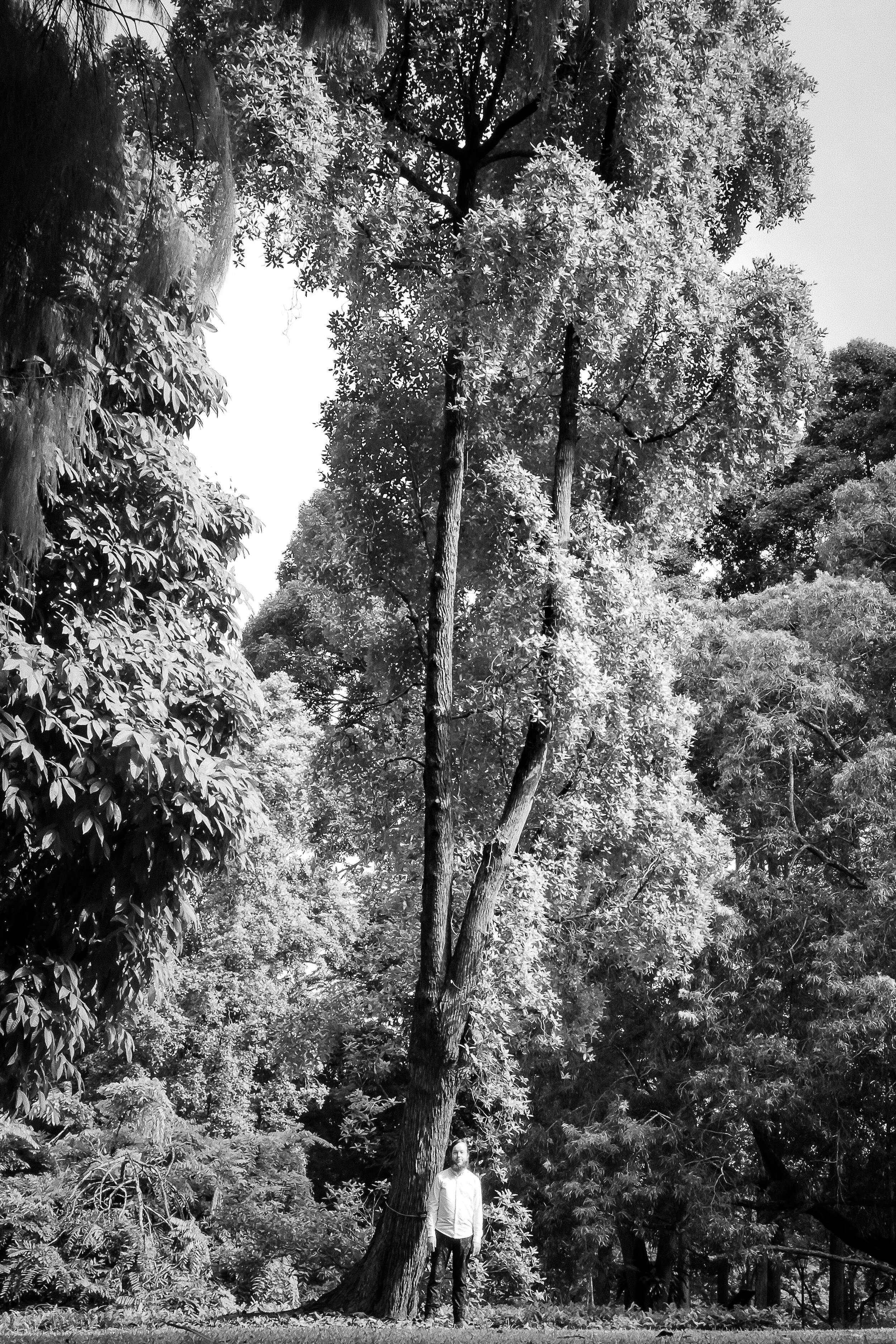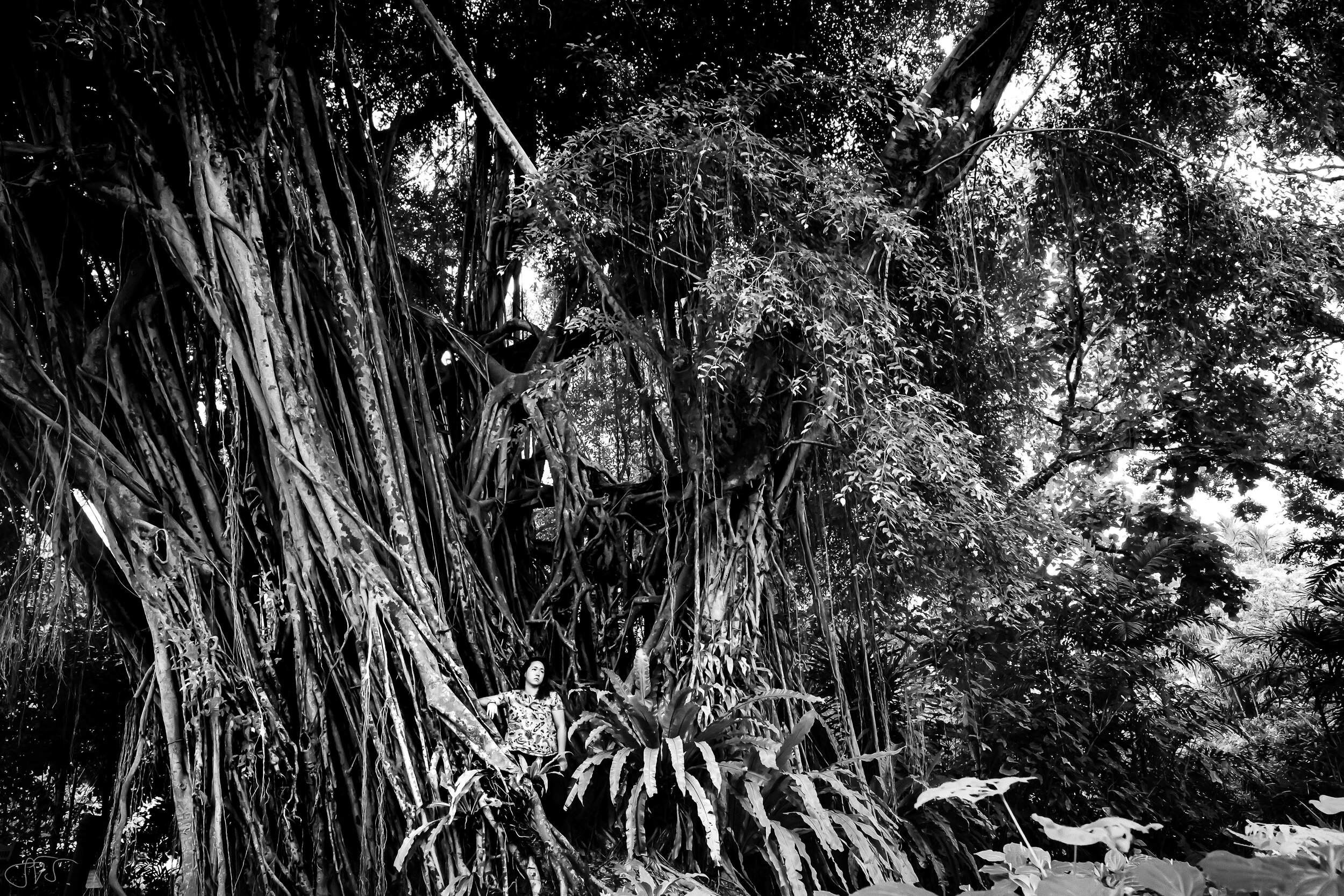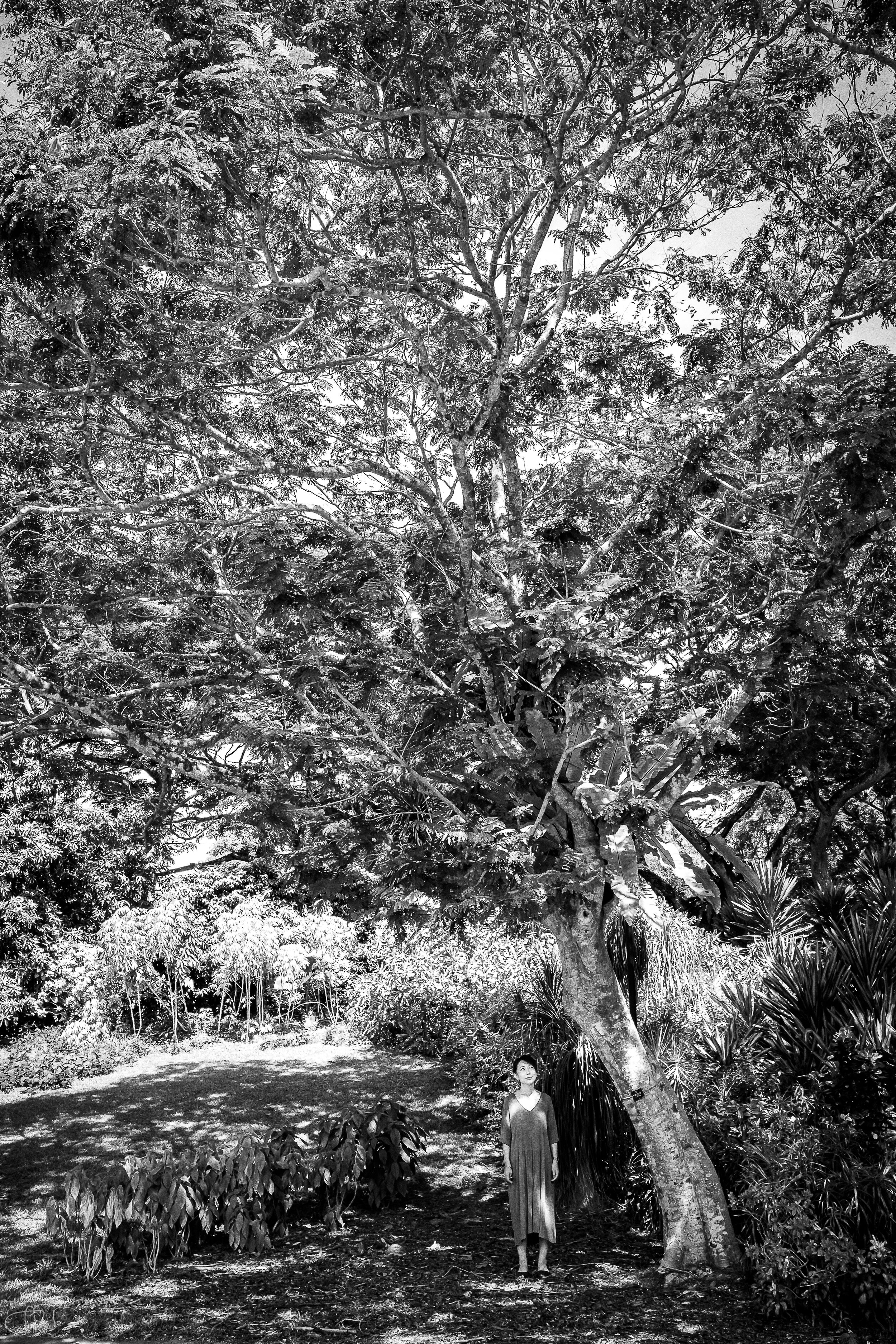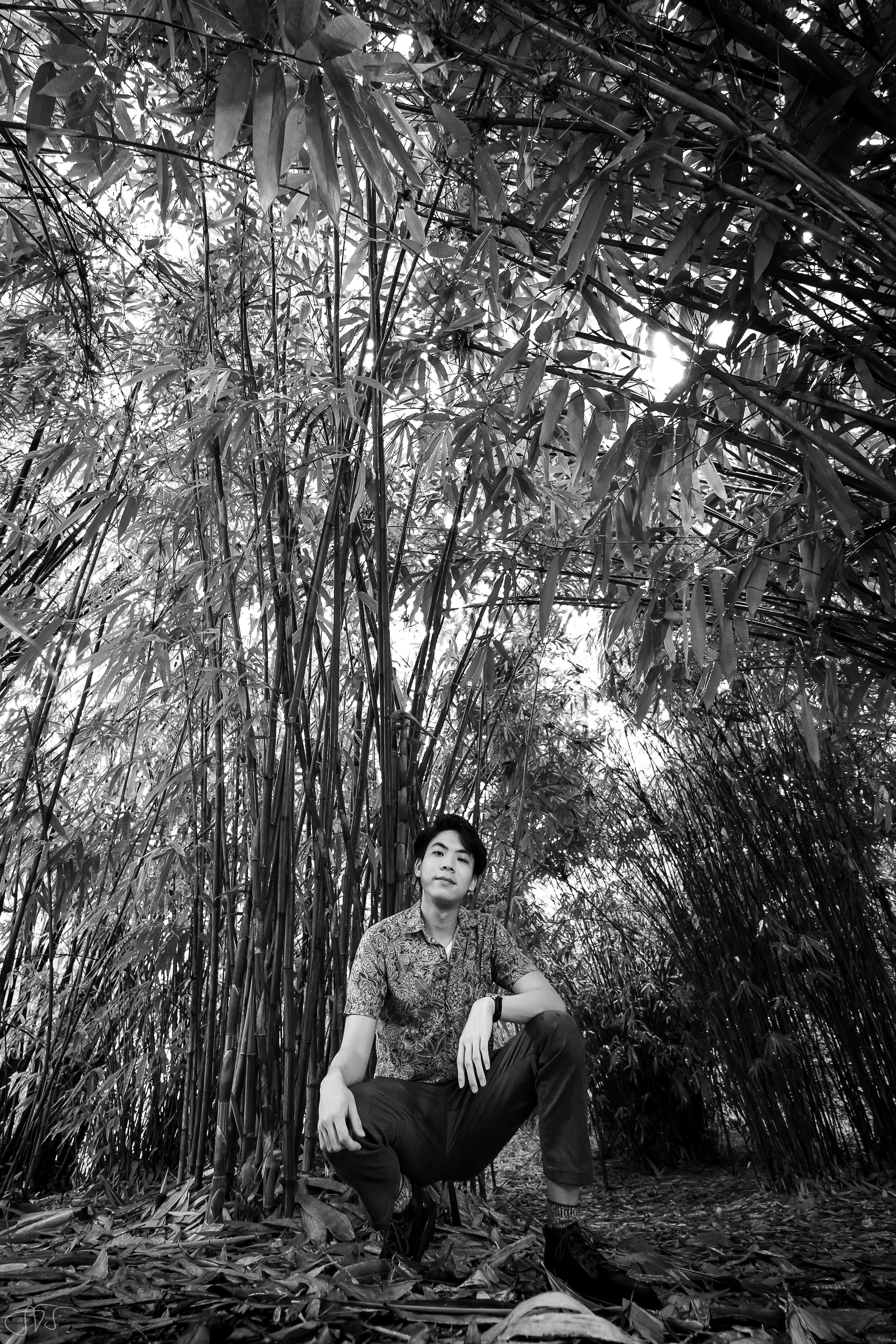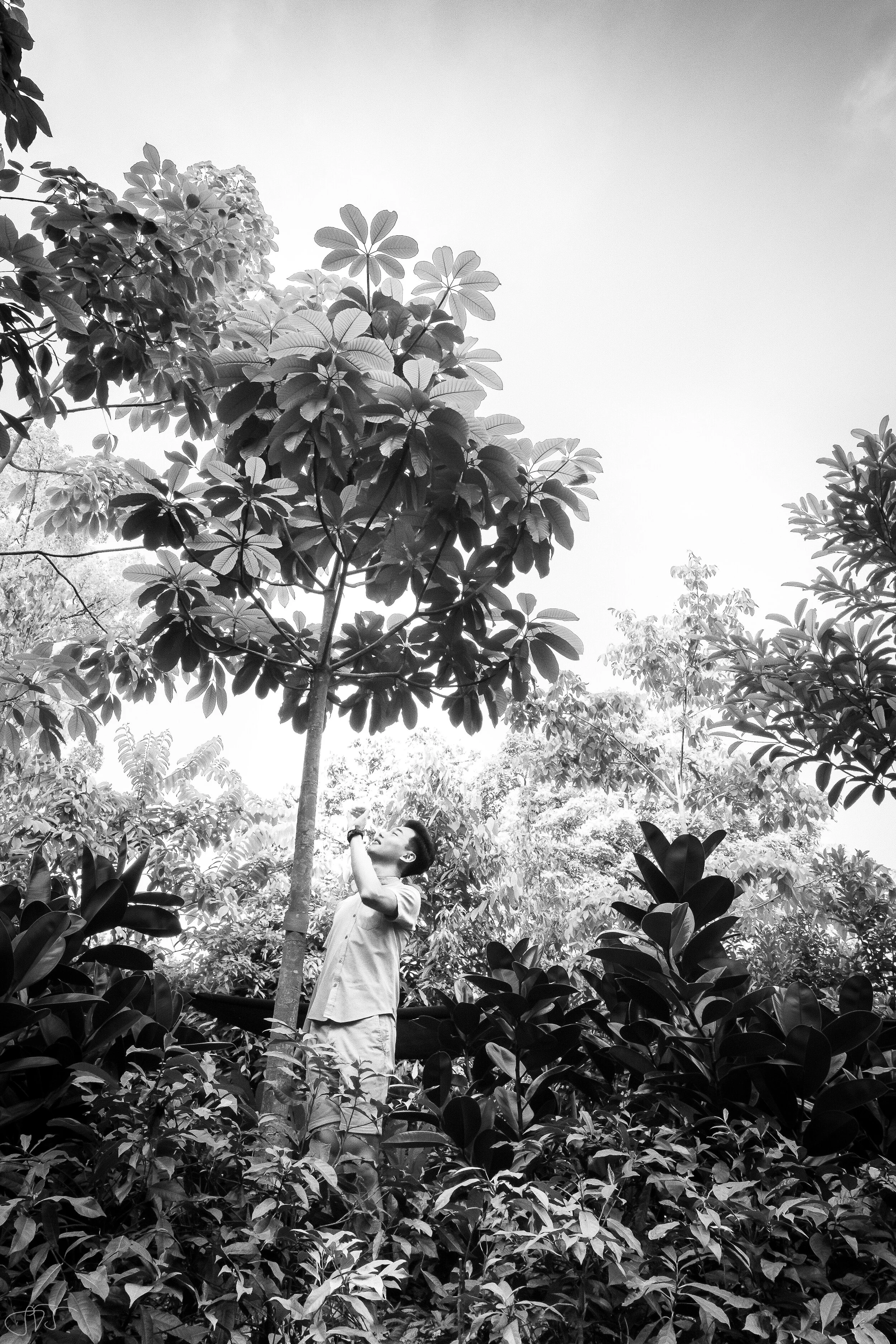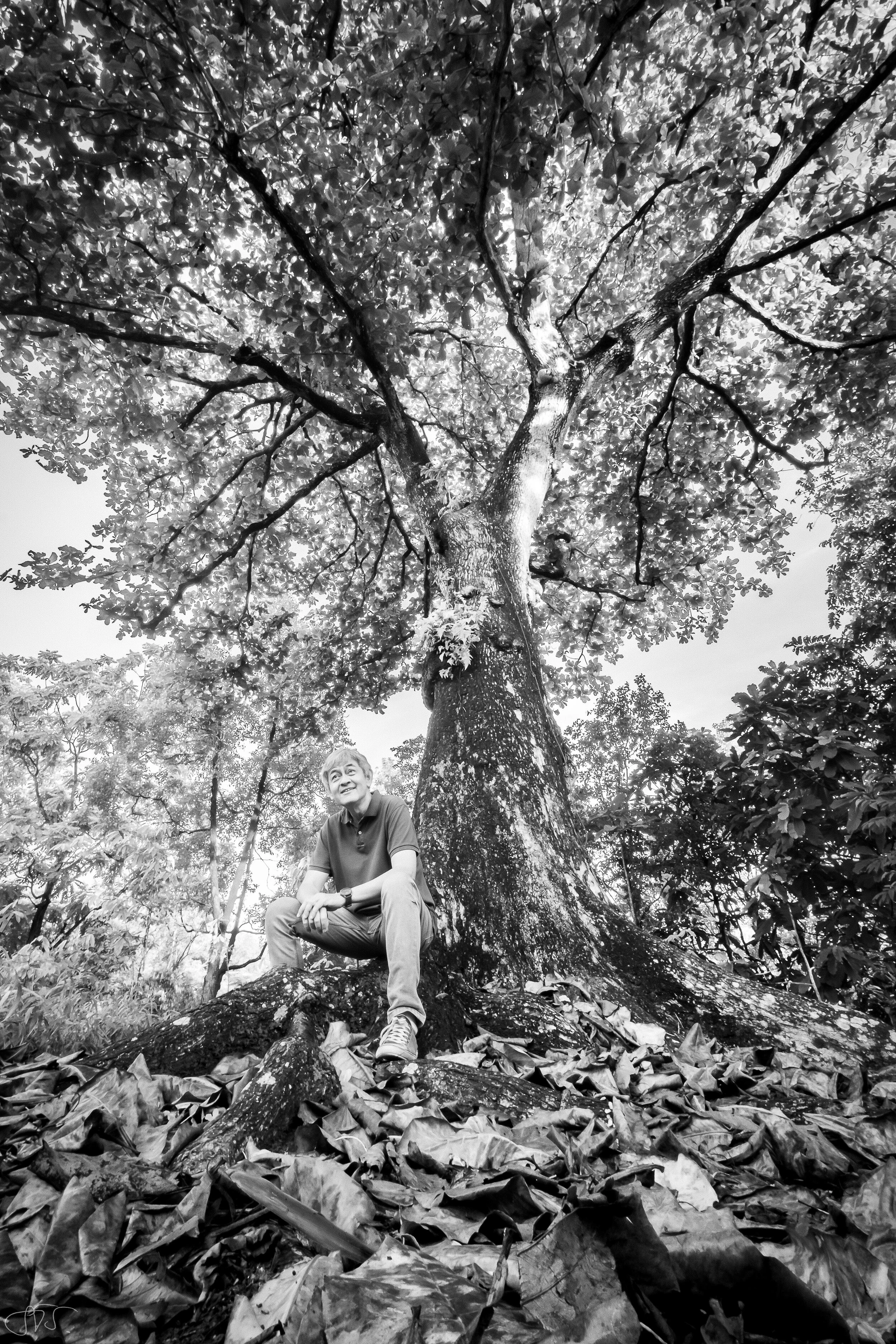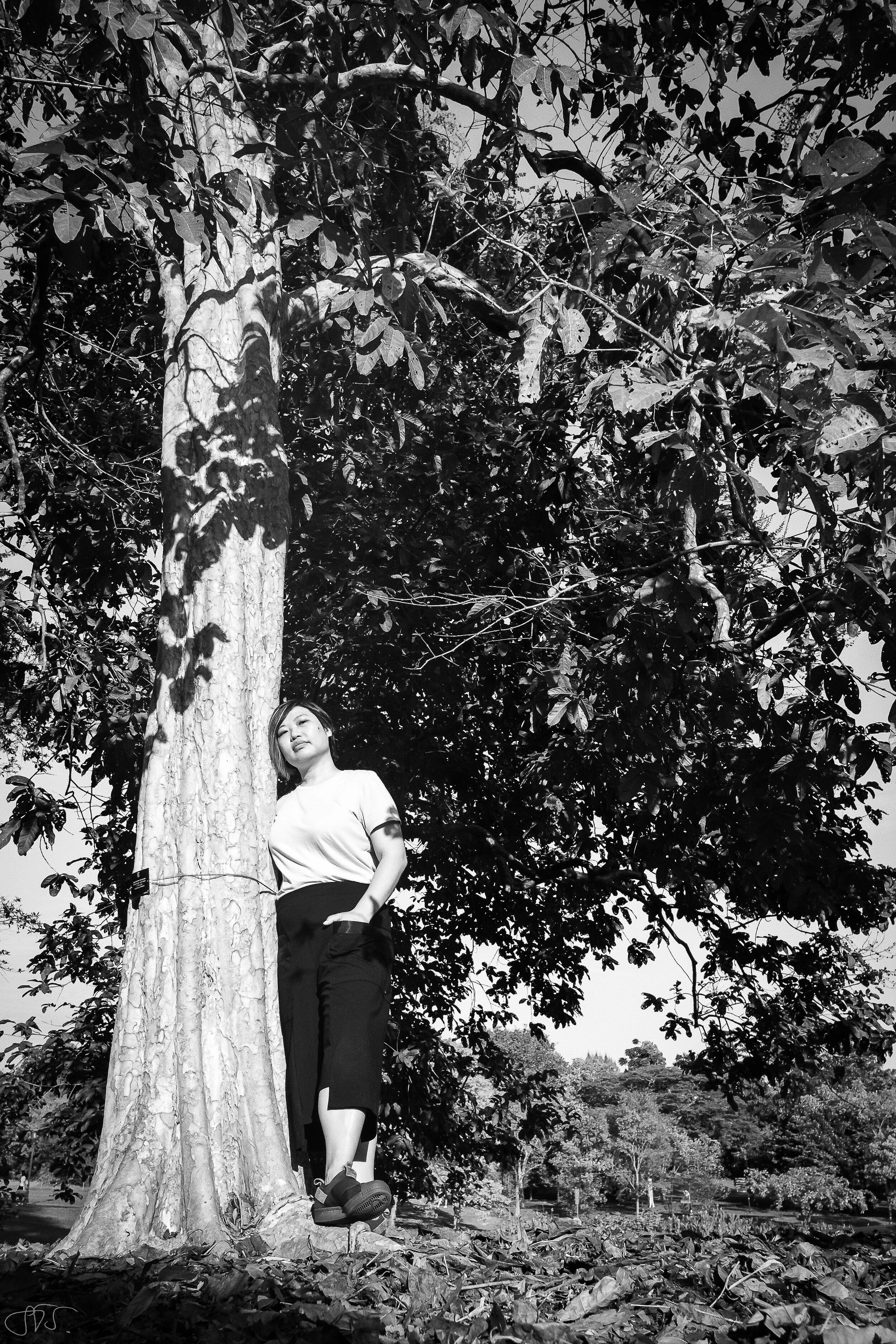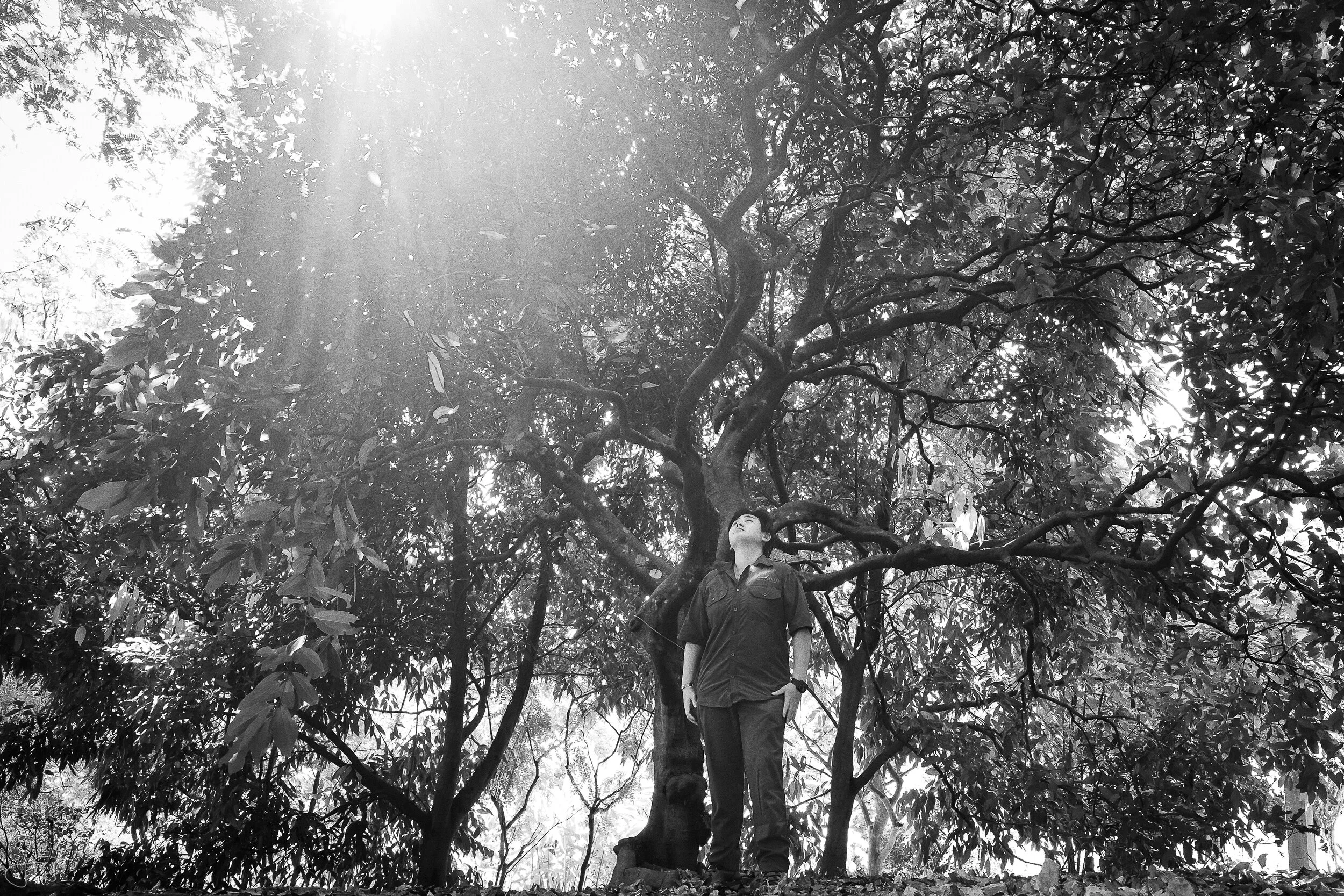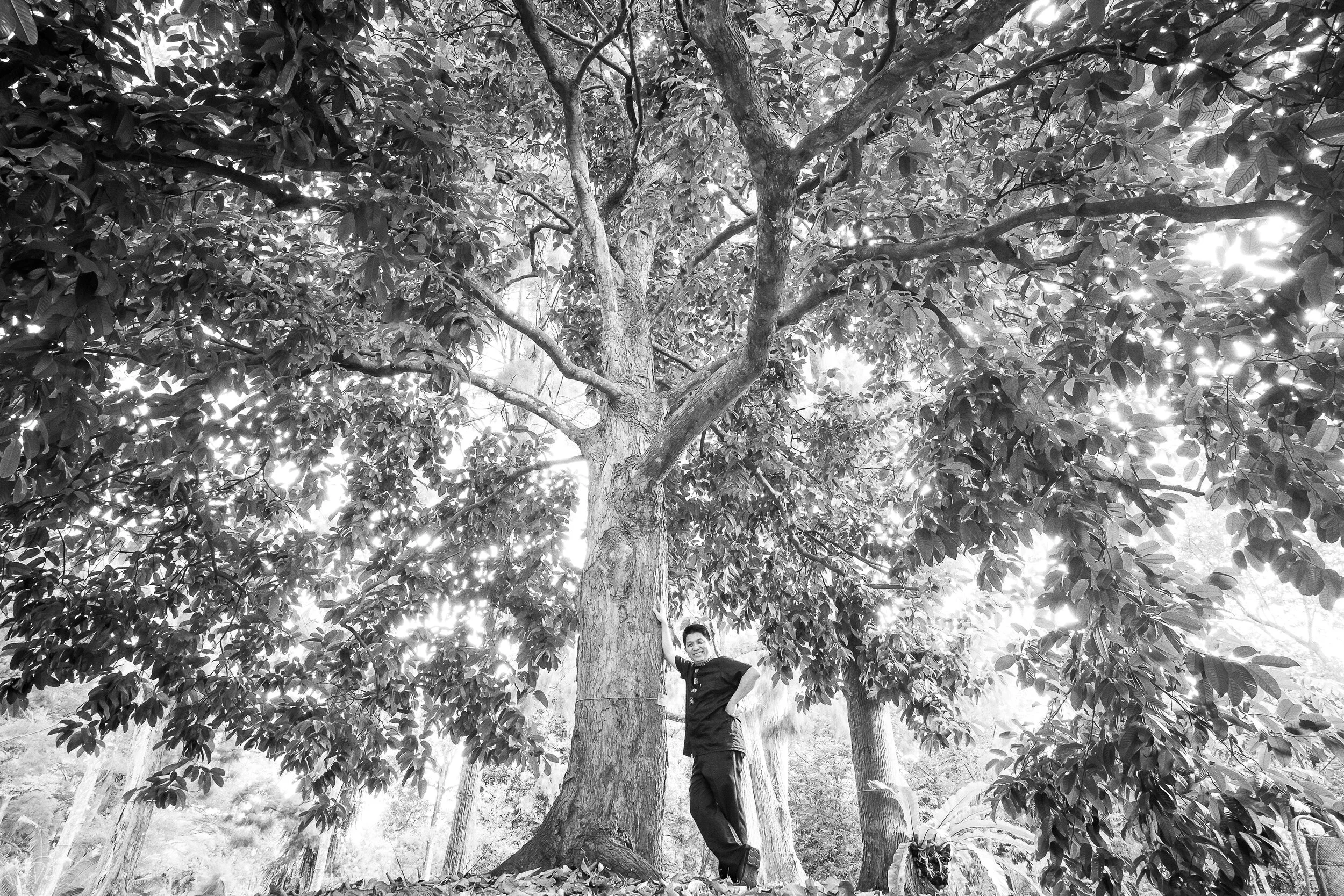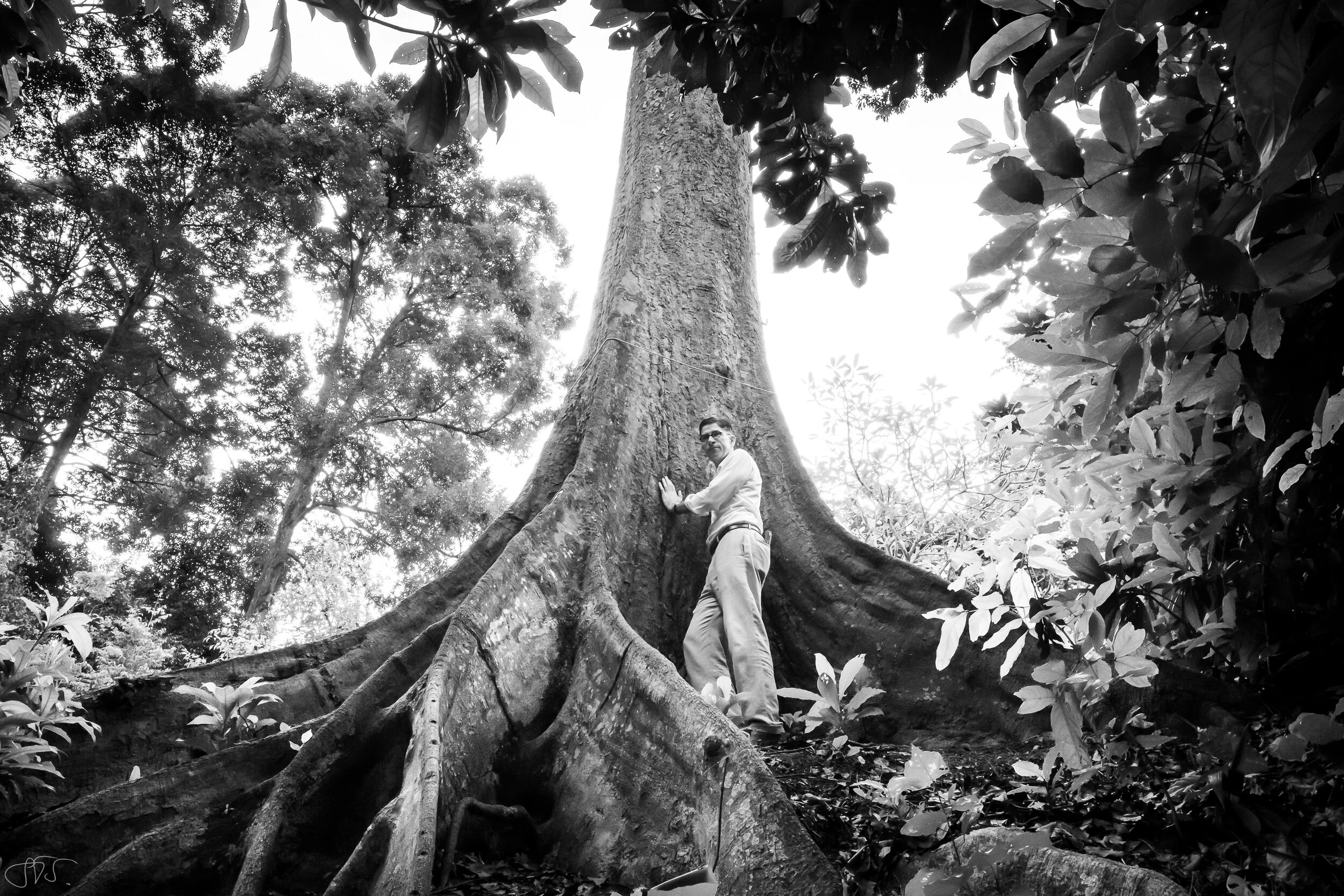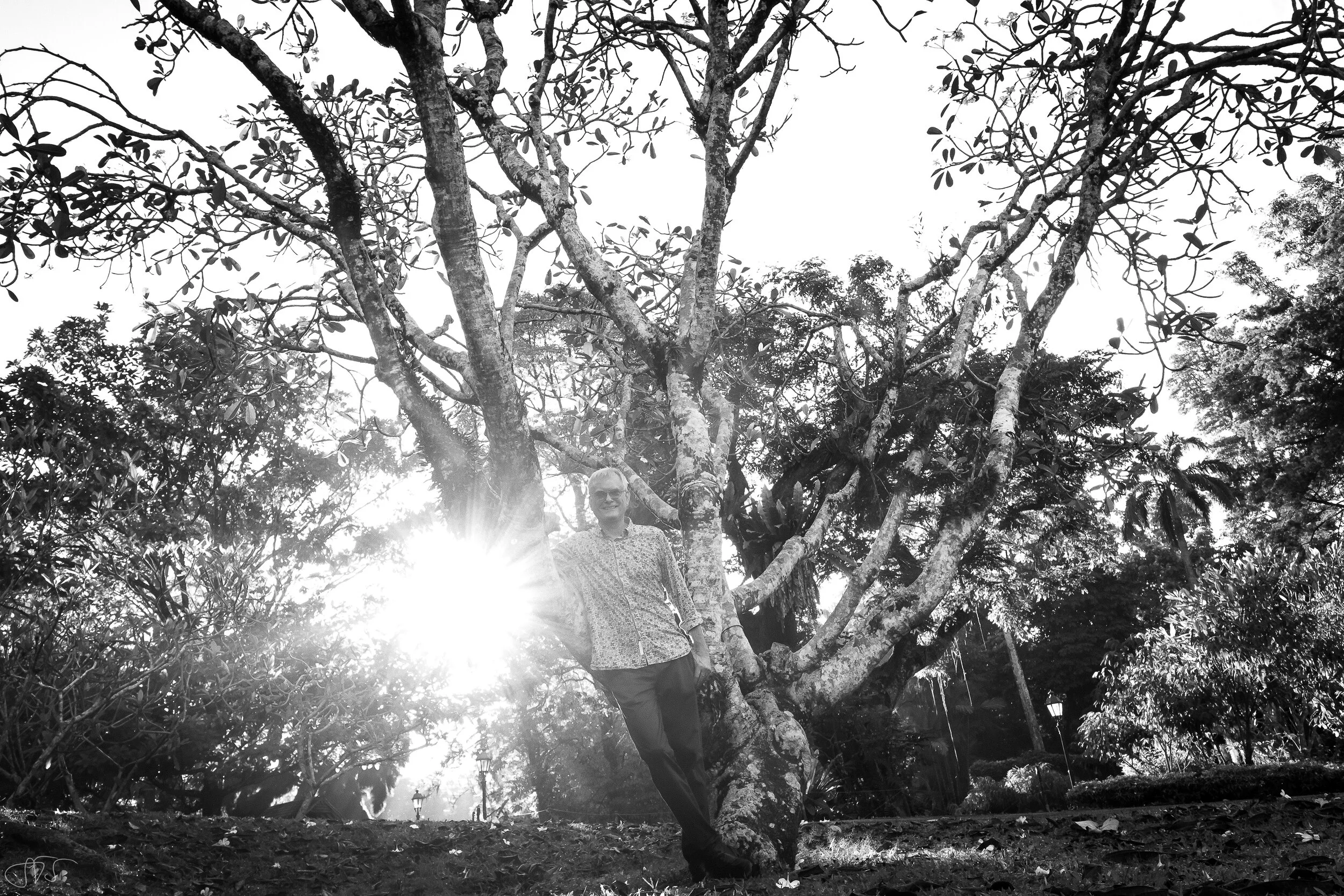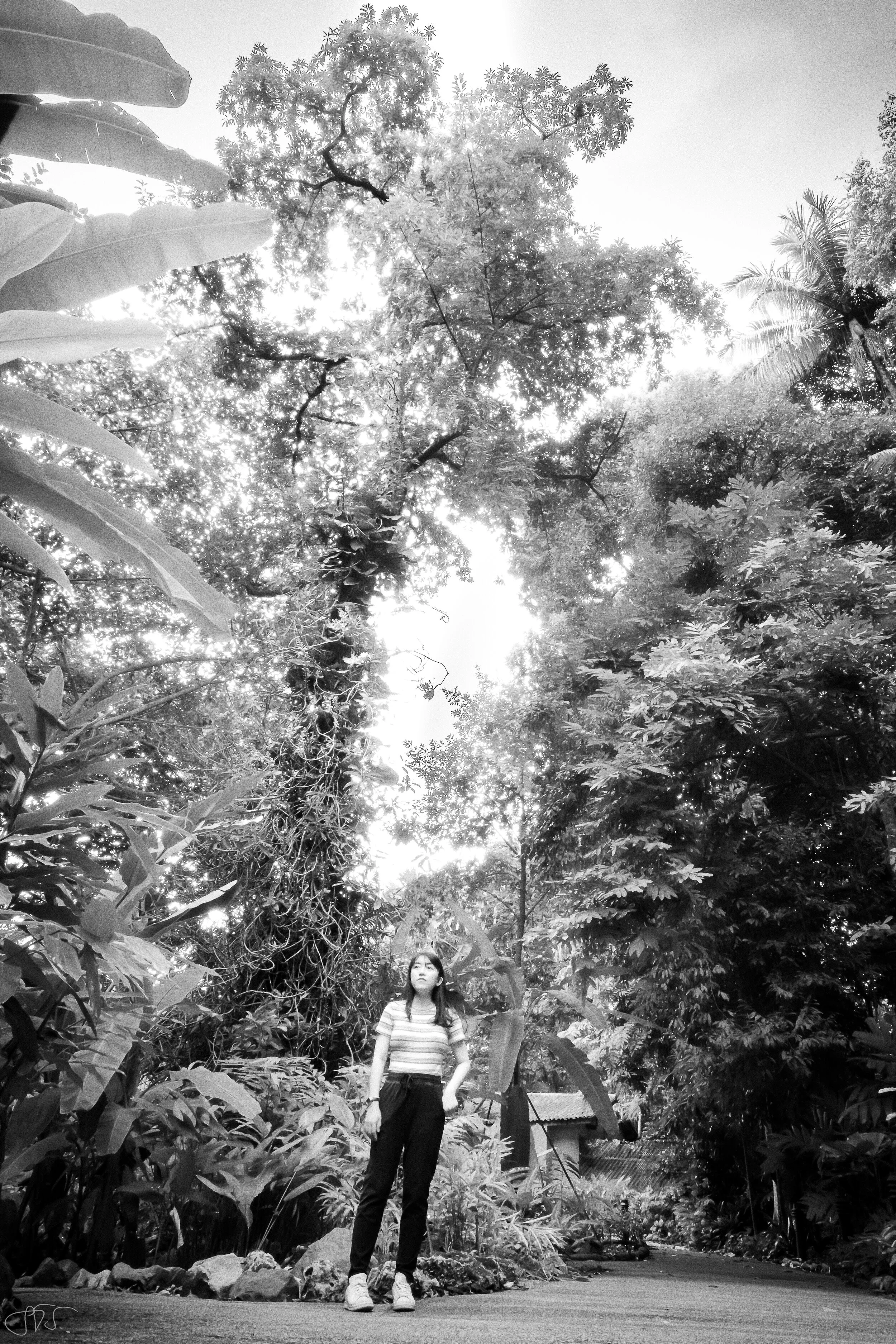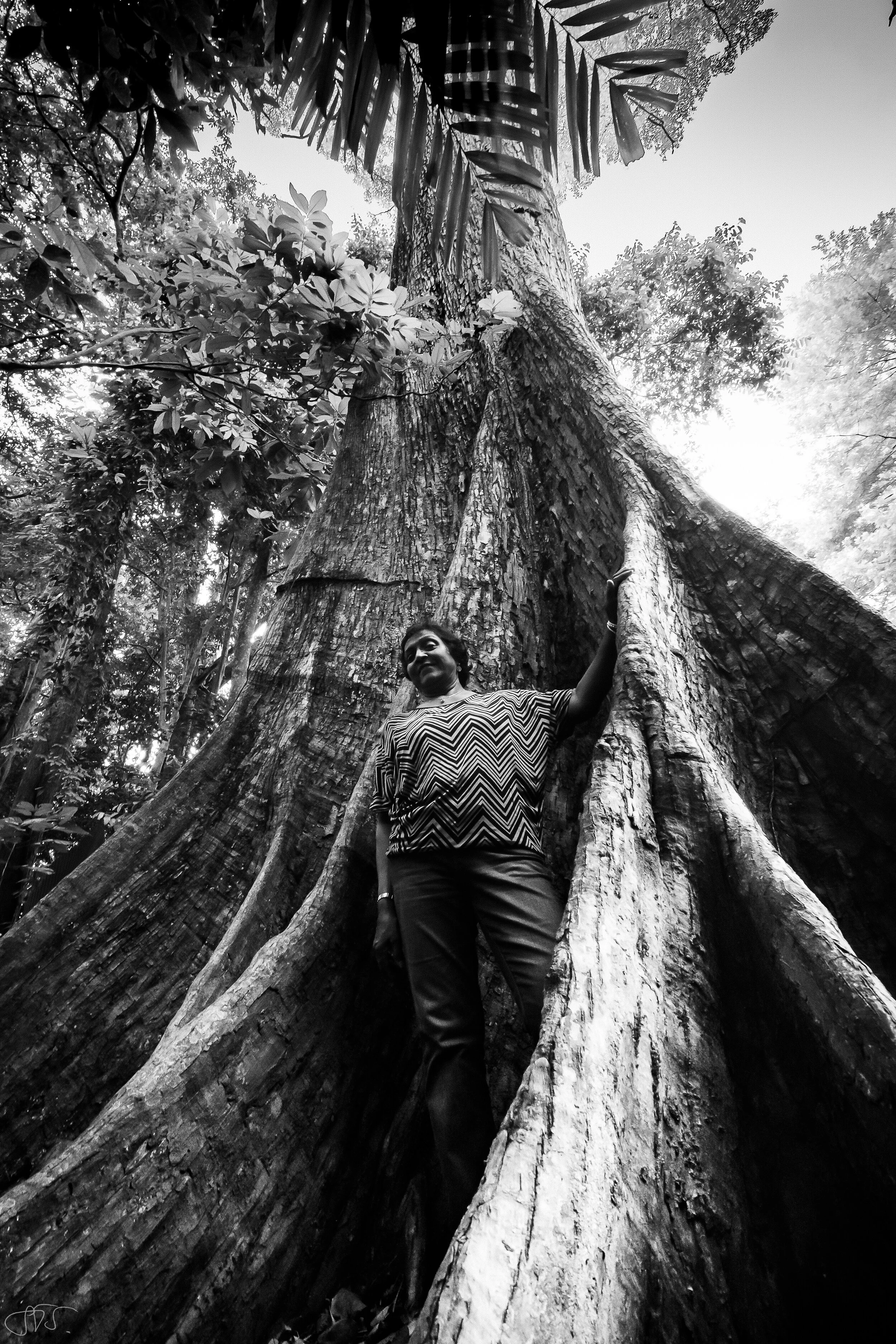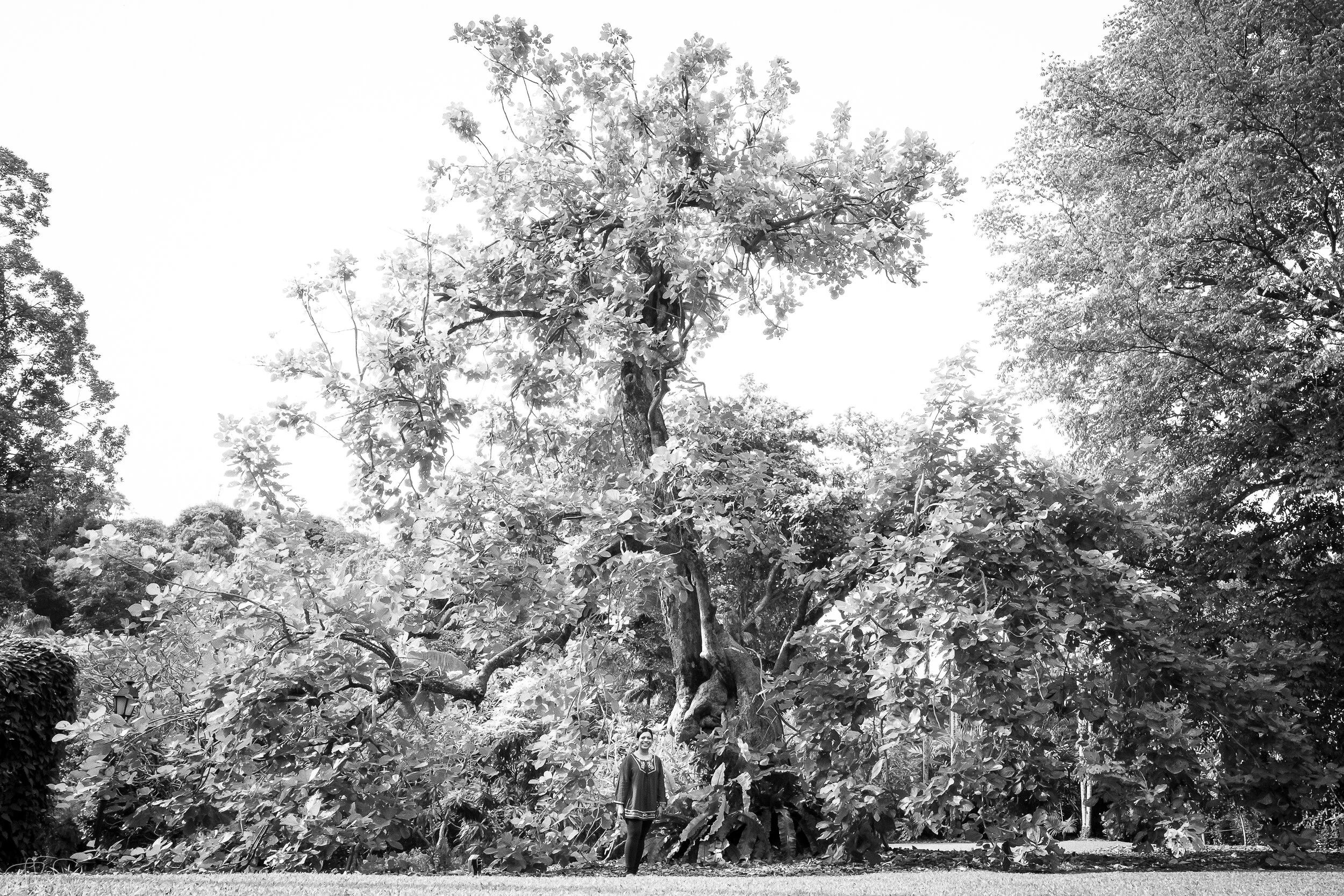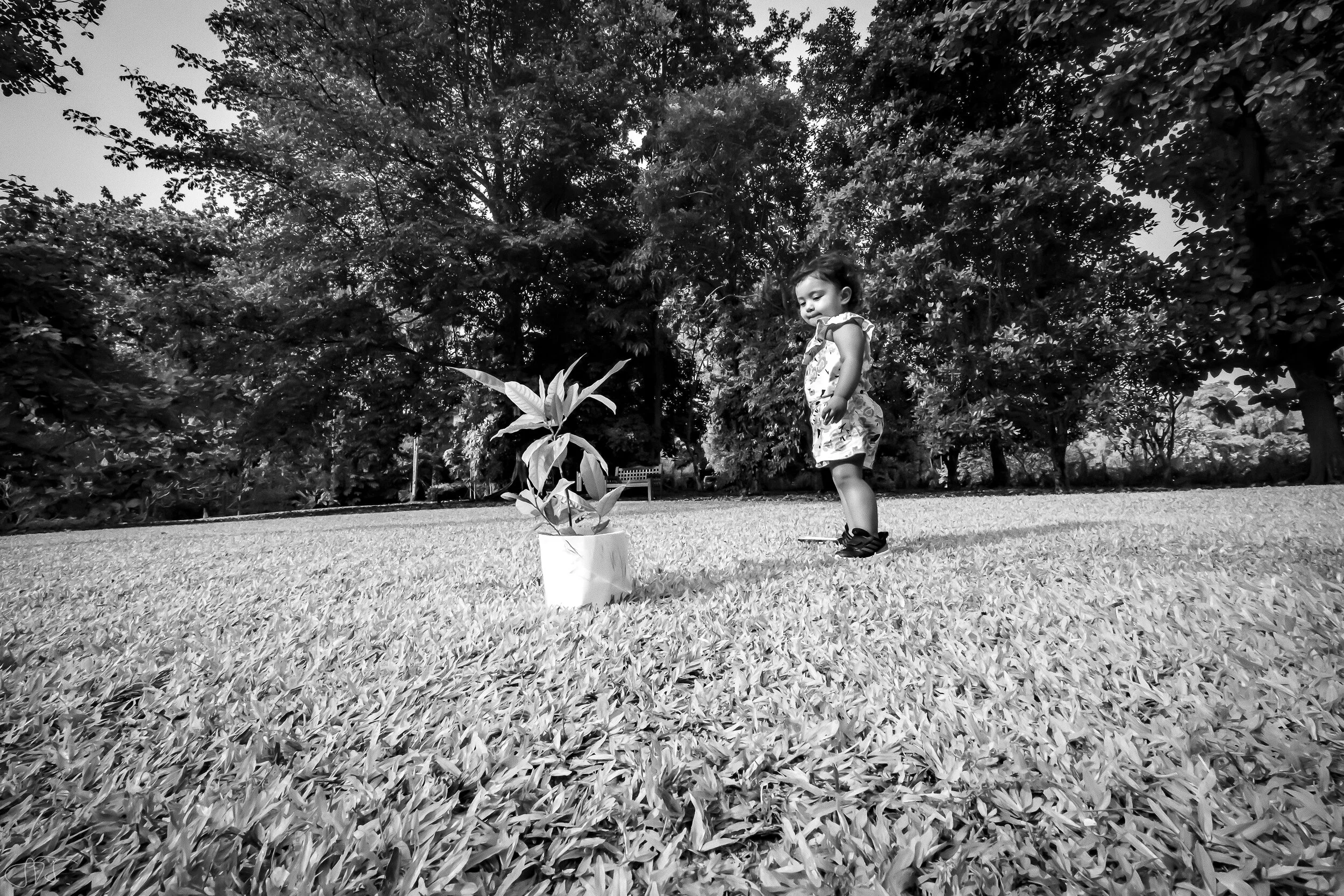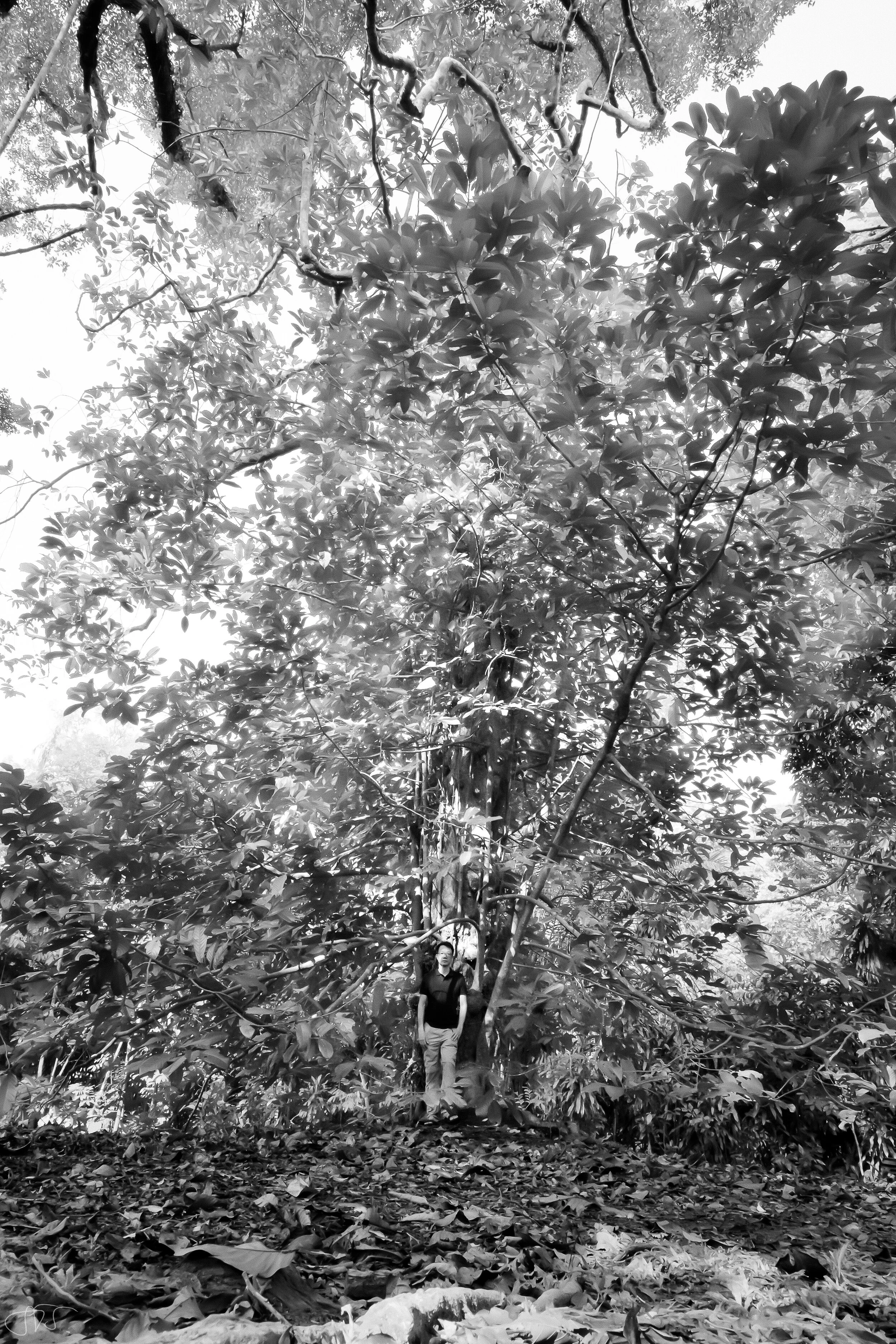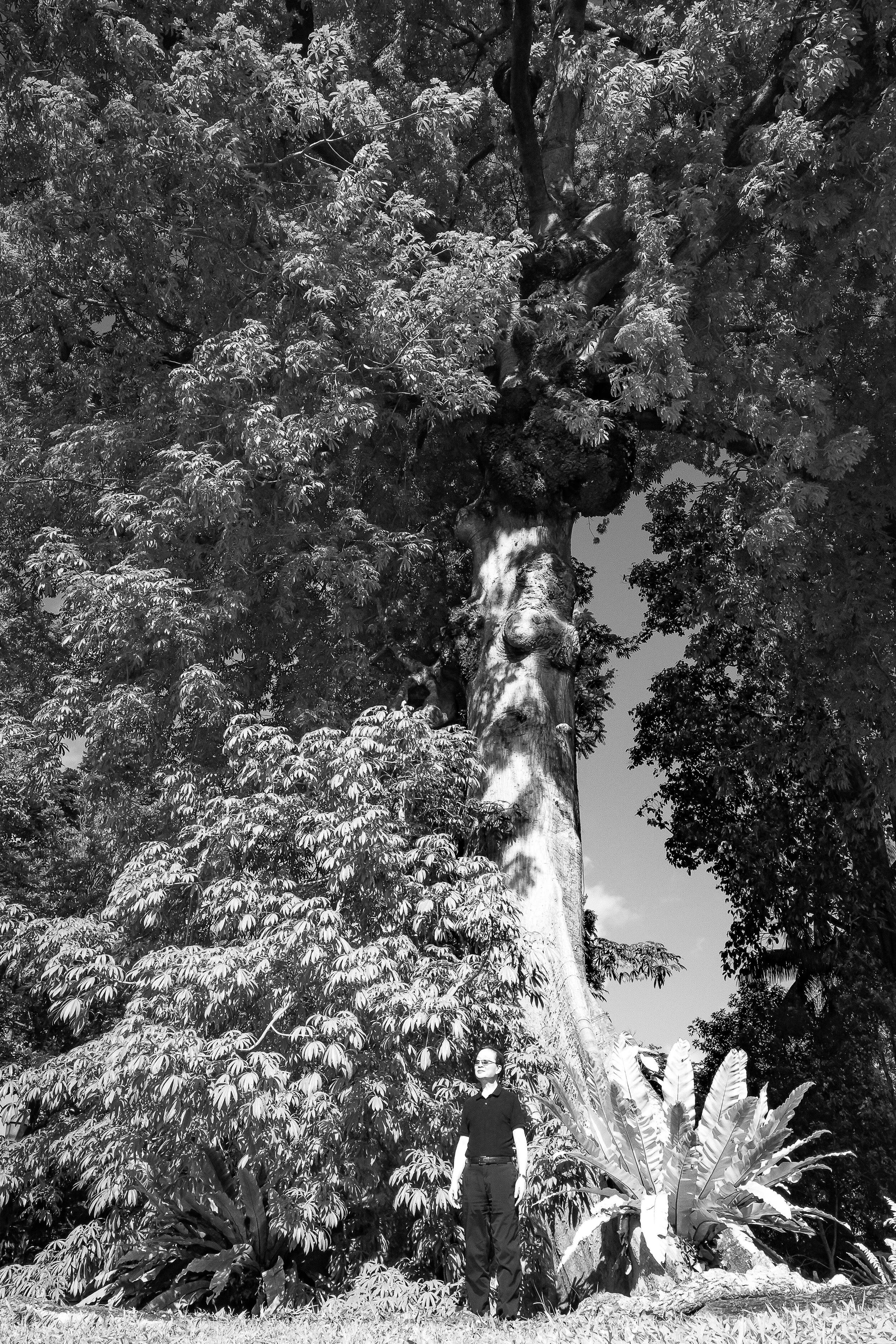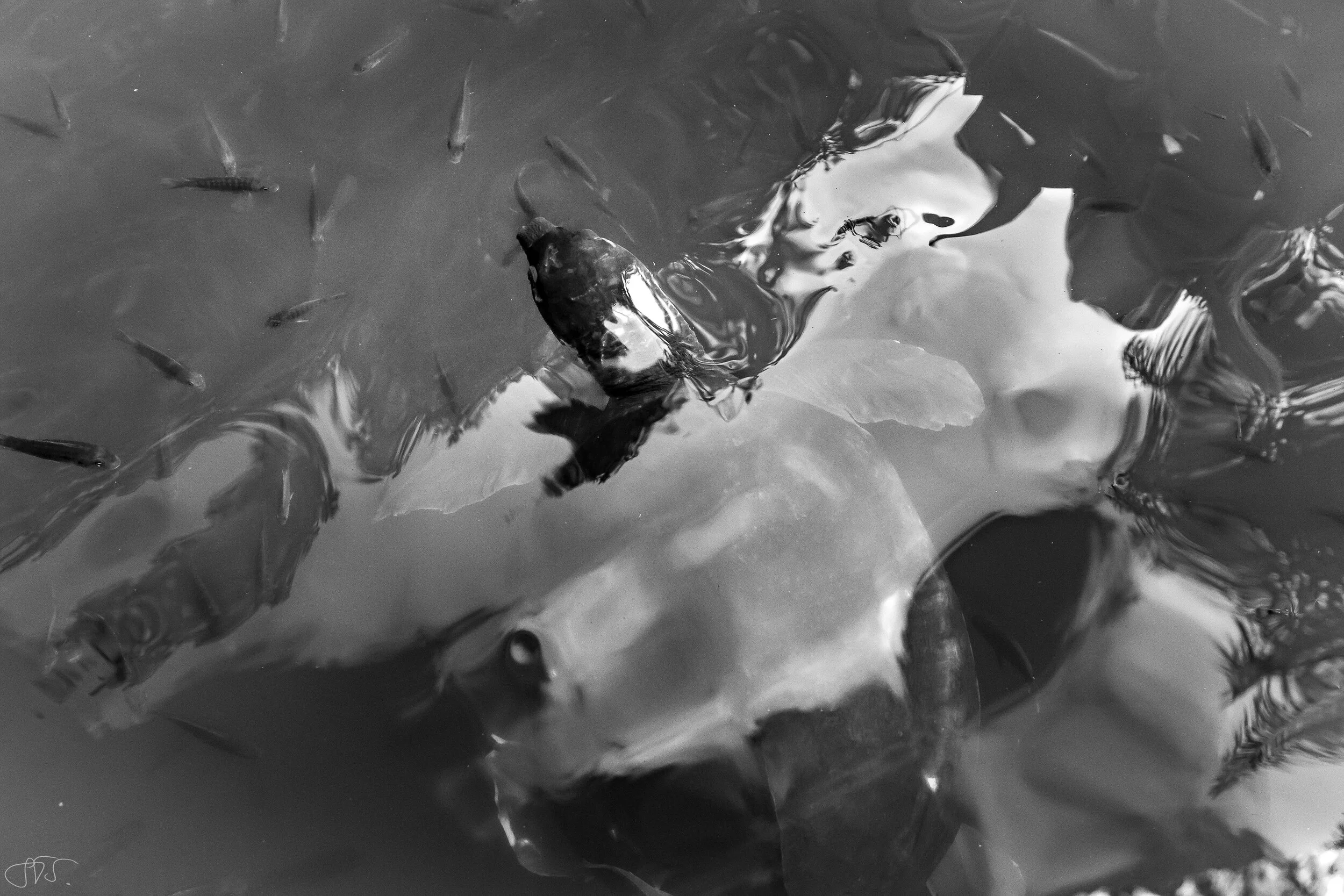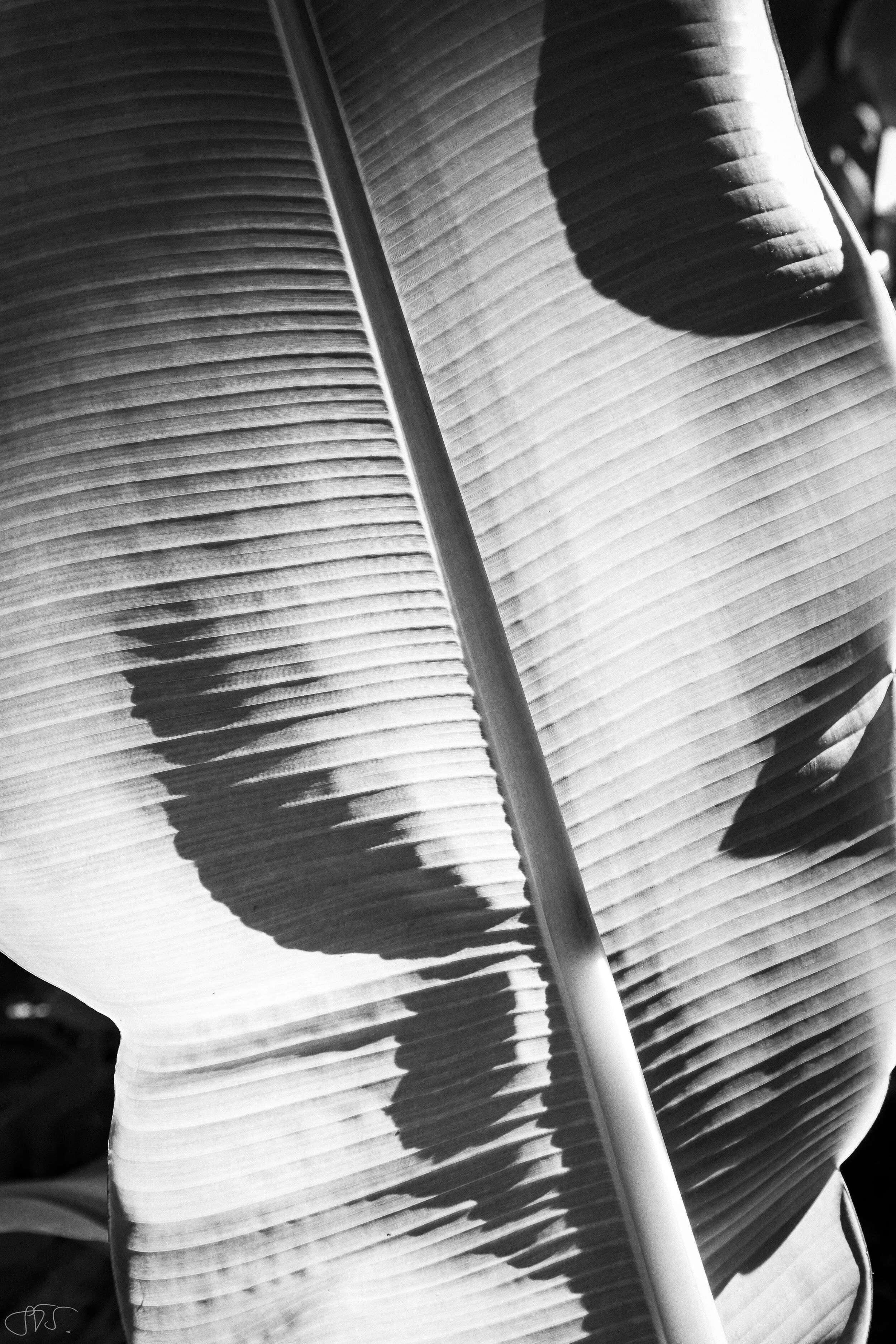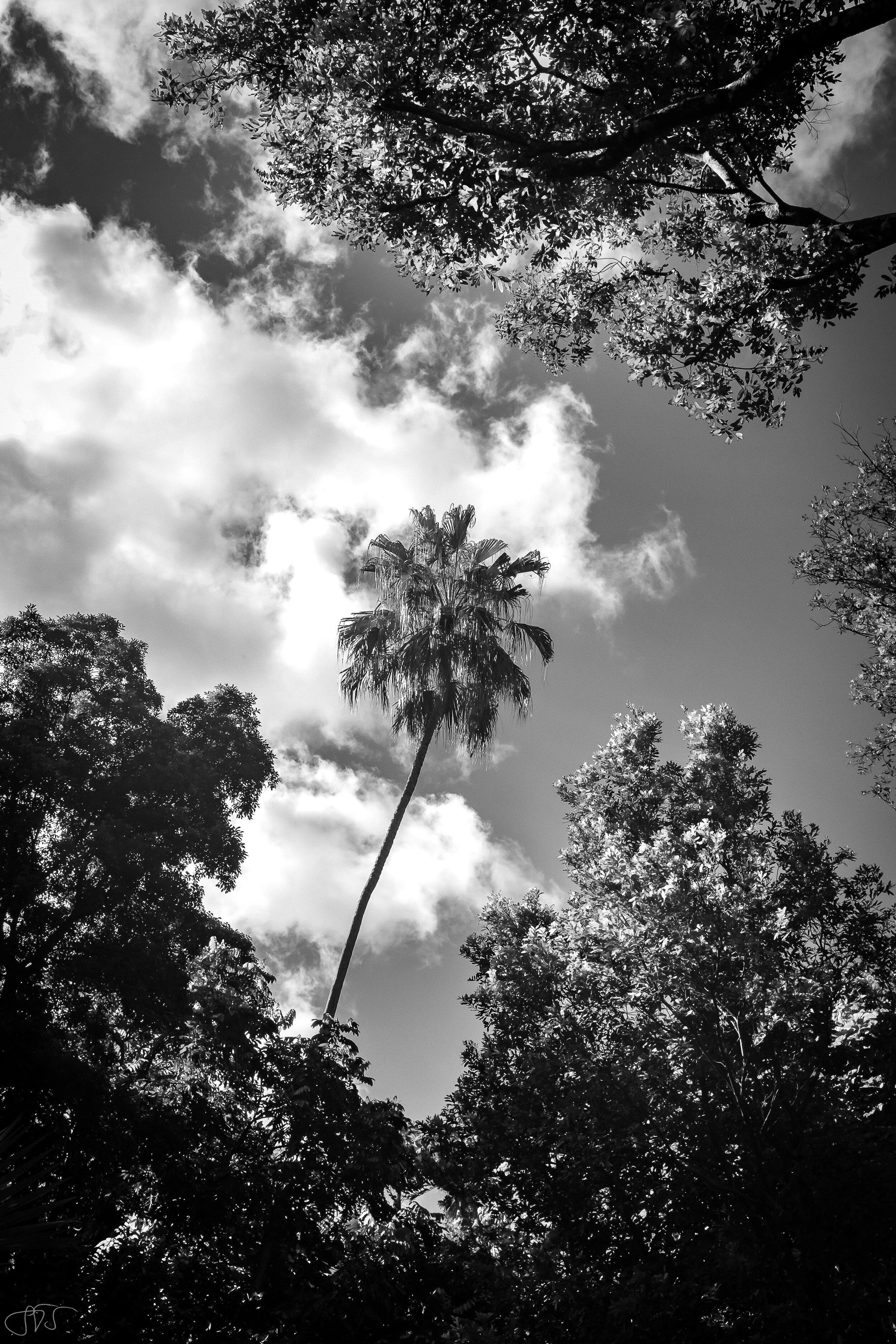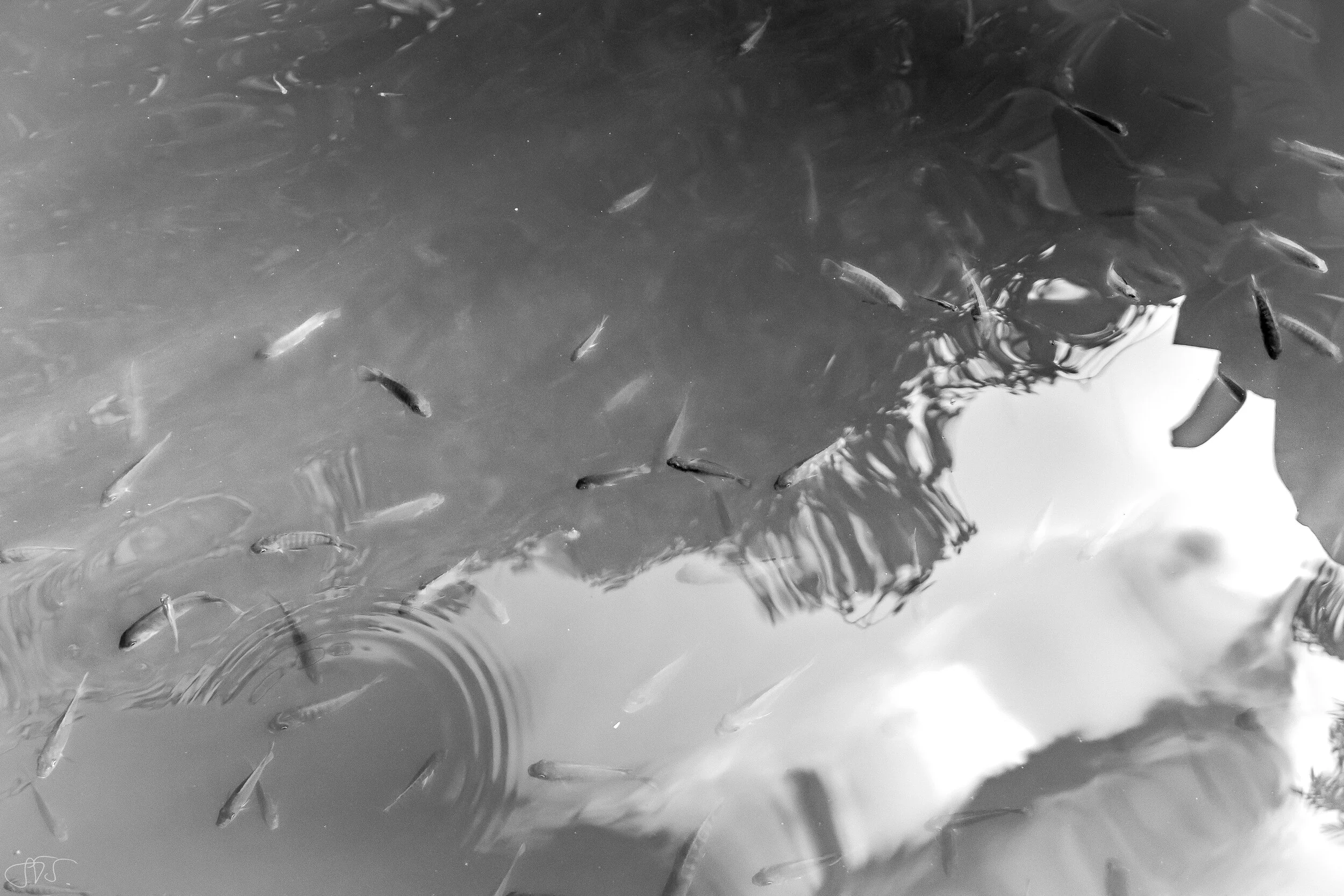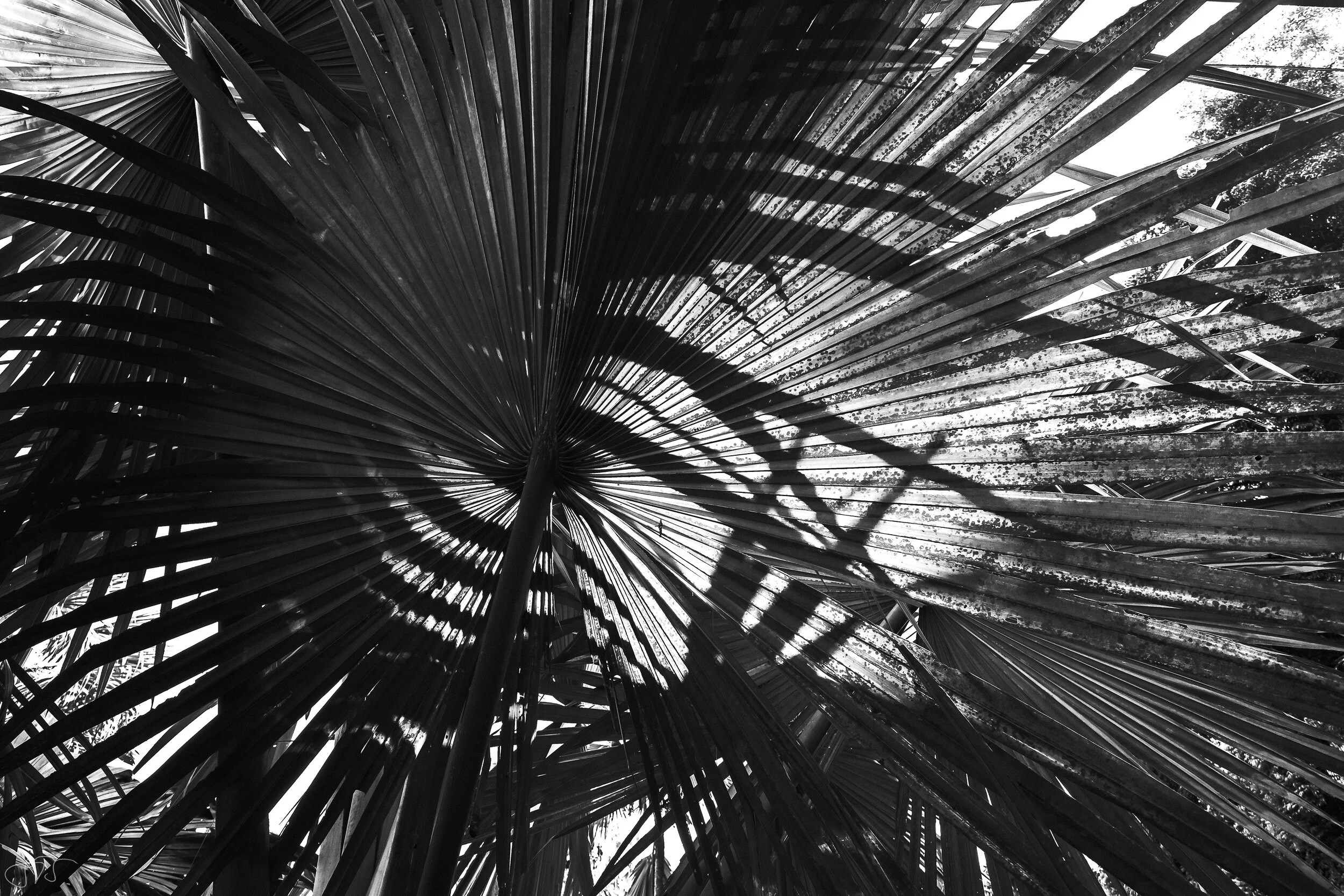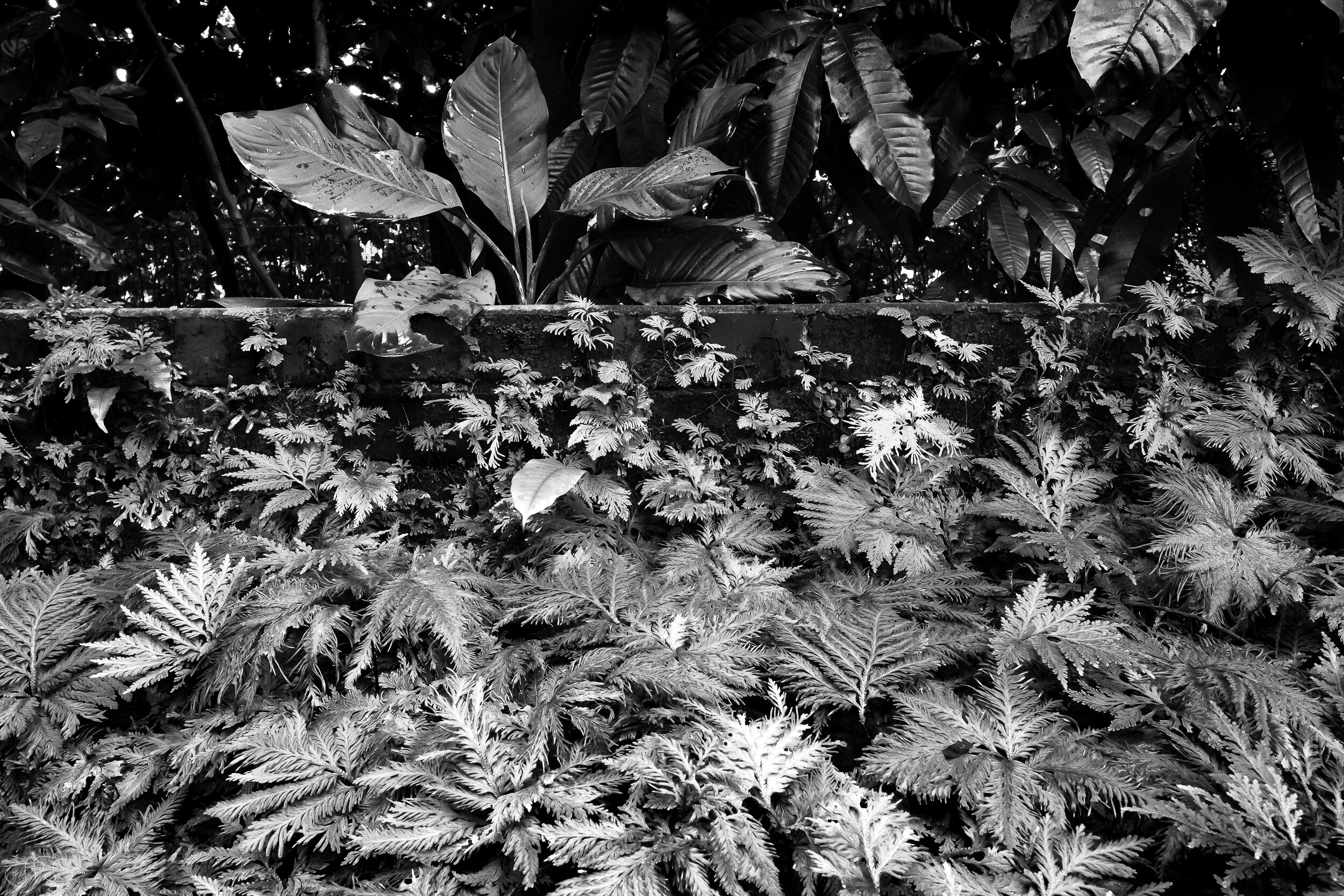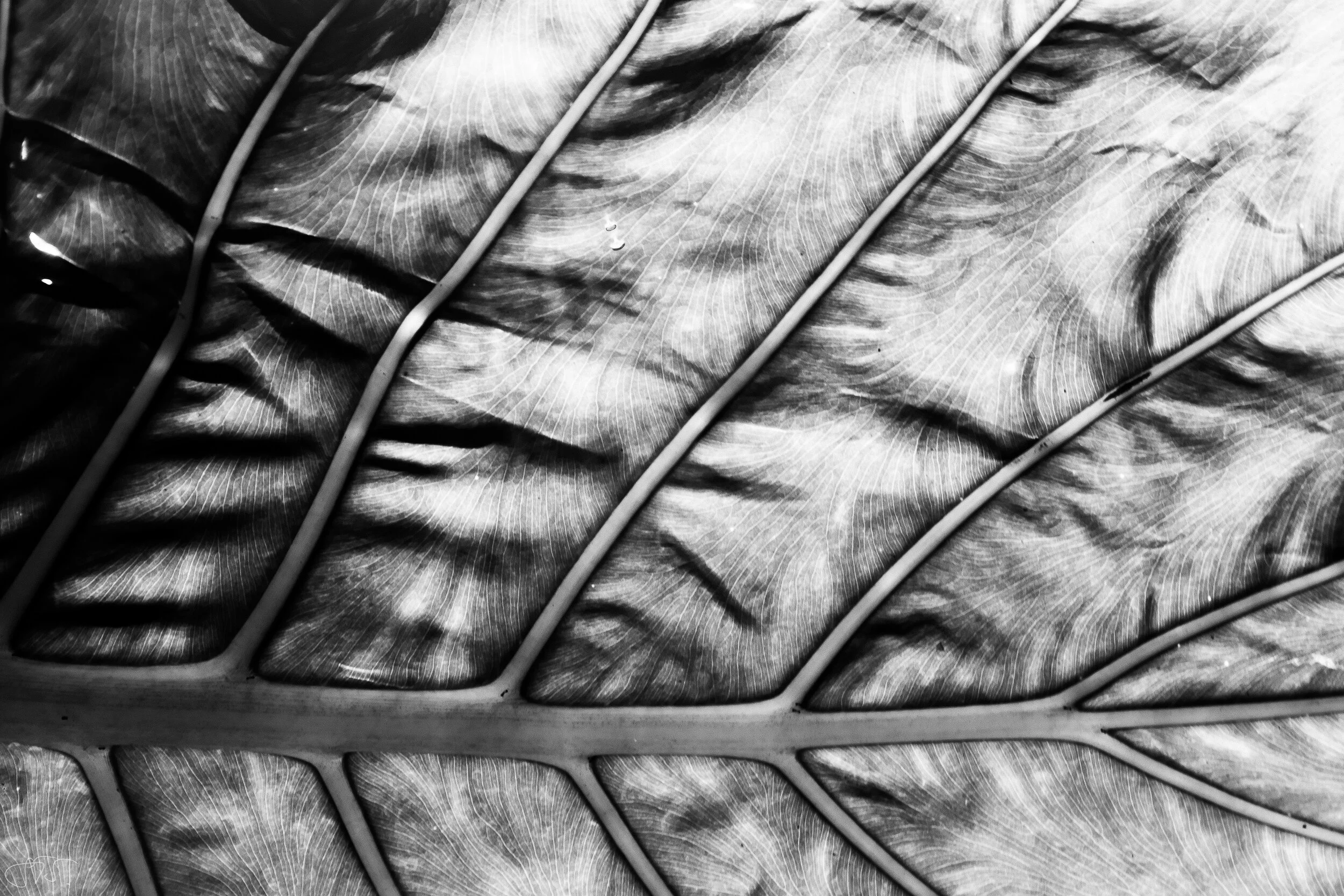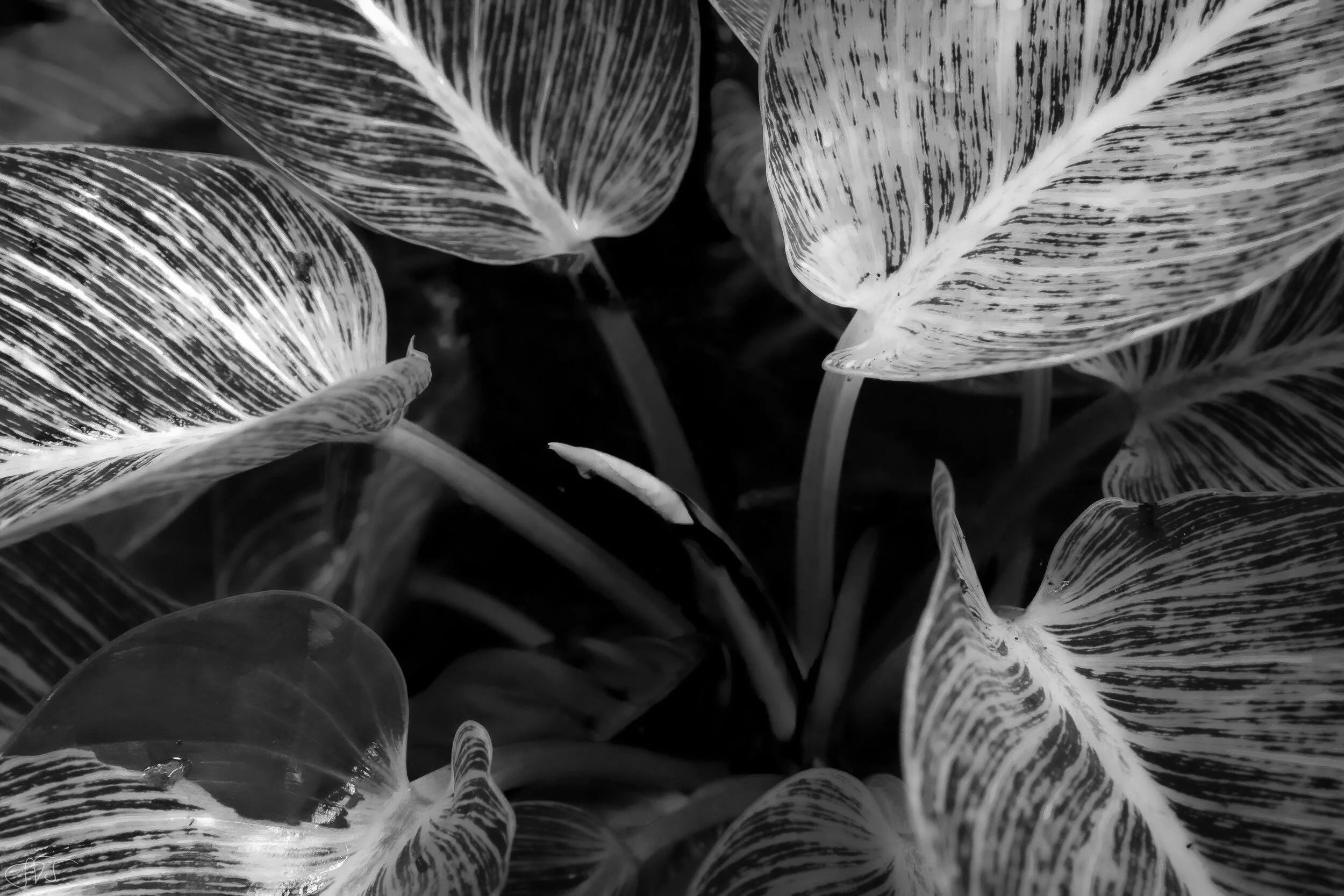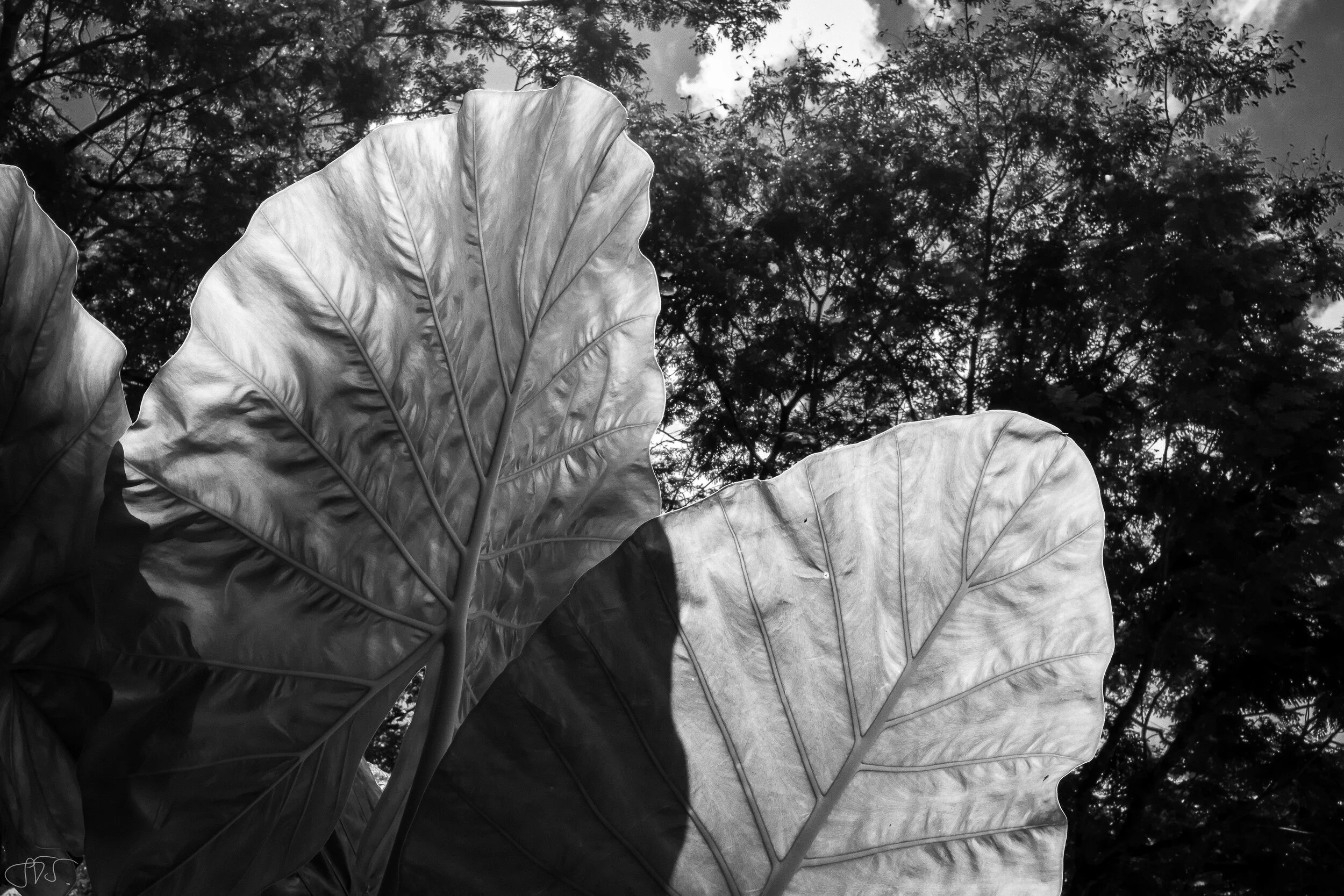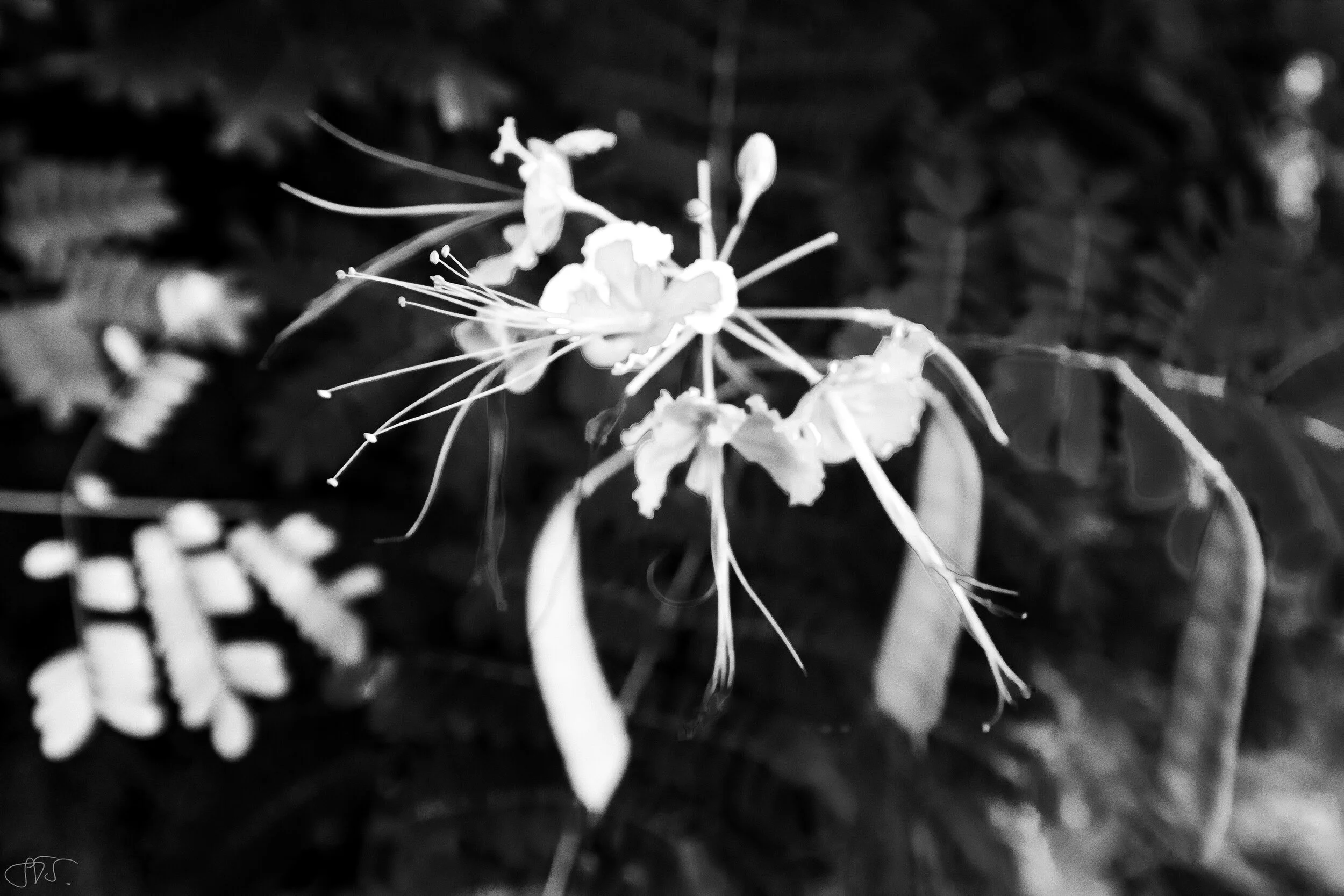THE TREE PROJECT
Exhibition Guide for the Singapore Botanic Gardens.
All art works and texts, unless otherwise stated, by Sarah-Tabea Sammel.
Sarah-Tabea Sammel © 2021, all rights reserved. Content usage is subject to a licensing agreement. You can email me here.
This fine art photography series explores human-nature relationships through portraits that match human subjects with tree subjects to place both in the same photograph. Conceptualised in black and white, the series prompts the discussion of different ways in which human and tree subjects meet on the same plane of being in the world. The project seeks to offer conservation and environmental storytelling perspectives on Southeast Asian and Singaporean landscapes. In the context of a shared global economy and growing society, three categories of tree species have been included: primeval forest (trees that were in Singapore before Singapore’s founding), native species (trees that naturally occur in Southeast Asia), and cultivated trees (introduced tree species that would have originated from outside Southeast Asia) that have become international symbols of the tropics. The work asks about perceptions of nature, wild landscapes, urban environments, and the genuine interaction with locally growing species that may or may not originate from the same habitat in which they currently grow and are encountered by visitors. Inspired by the perception that we live on a green planet, THE TREE PROJECT is a practice-as-research project that is asking about coexistence, communication across places and living organisms, and the dimensions of timelines that interconnect in the presence of each photograph. The Artist has invited local and locally based cultural practitioners and artists from various backgrounds to participate in the project. They all connected to ‘their tree’ in different and surprising ways and the images are moments in time of the thoughts, the feelings, and the wonder from the shared time in the Botanic Gardens.
The exhibition consists of 30 photographs across a total of 34 exhibits that are accompanied by environmental storytelling writing. All texts refer to when the image was taken and the age and activities of all photography series subjects at that time. All rights belong exclusively to the Artist.
Jayaprakash Bojan (42 yrs. old), Indian, photographer, conservation activist, and educator; National Geographic Nature Photographer of the Year 2017 with the heritage Adenanthera pavonine, Saga Tree (over 100 yrs. old). Located near the Bandstand. This listed heritage tree belongs to the family of the Fabaceae and non-climbing legumeous trees and grows up to 20m in height. It is native to lowland forests of India and the tropics, while it was cultivated as a shade tree as well as for its properties across Southeast Asia and is by now distributed across the Atlantic. Also referred to as the “Red bead tree”, its glossy red seeds have been utilised in jewellery-making for hundreds of years but have also functioned in currency and exchange economies as they were used to weigh up gold, silver and copper. The typical red of the tree’s produce was also commonly applied to colour dye practices. The entire tree is recorded as usable for such domestic as well as various medical purposes, with diverse references to brews, leaf decorations and tonics. The tree provides shelter and exposure for various wildlife in the Botanic Garden. Almost heart-shaped, it spreads its branches towards the morning sun and visitors. Our shoot was overlooked by a young monitor lizard absorbing the day’s first heat.
Jeannie Ho (49 yrs. old), Singaporean, photo artist, and educator with the Samanea saman, Rain Tree (over 36 yrs. old). Located near the Victorian Gazebo of the Swan Lake. This tree is one of the most common road-side trees in Singapore. An introduced species belonging to the family of Fabaceae, it grows up to 30m in height and is today spread widely across South America and Southeast Asia. While the tree can be used for its timber as well as some nutritious and medical properties, it is often associated and appreciated as an ornamental landscaping species. With the leaves of its umbrella-like crown closing towards the time of sunset as well as in response to overcast skies, this tree is referred to as “Pukul Lima” in Malay, meaning 5 o’clock, backdating to a context prior to 1982, when Standard Time was introduced across Malaysia and Singapore, while also resulting in its common name as the Rain Tree. With strong, exploratory and sheltering branches, the Rain Tree is an unmarked landmark in its quantitative spread and cultivation across Singapore and for many a local symbol of familiarity, recognition and home.
Steven Williams (26 yrs. old), British, diversity manager at a Singaporean museum with the heritage Podocarpus neriifolius, Mountain Teak (over 135 yrs old). Located near the Victorian Gazebo of the Swan Lake. This listed heritage tree belongs to the southern hemisphere conifer family of the Podocarpaceae. The evergreen tree grows up to over 30m in height, though has been observed to remain smaller in tropical areas and is most commonly found above an elevation of 300m across Asia and Southeast Asia to Polynesia. Known in Malay as Jati Bukit – “teak hill” the species is famous for its high-quality timber, while bark and leaves are said to carry medical properties. — The tree is one of the last survivors of a termite attack on the Botanic Garden’s conifer stretch dating back to the 1870s. The Jati Bukit carries the wonder of the diverse conifer family – unsuspected at the equator – as it grows in response to the storms that bent its stem in a seemingly open embrace around its own and its visitor’s periphery.
Eric Kerr (36 yrs. old), Scottish, philosopher of technology and scholar of social epistemology; researcher and educator at the National University of Singapore with the Cyrtophyllumfragrans, Tembusu Tree (over 25 yrs. old). Located near the Victorian Gazebo of the Swan Lake. The Tembusu belongs to the family of Gentianaceae (Loganiaceae) and is an evergreen tree that can grow up to 30m in height. The species is native to Southeast Asia and frequented by the Malayan Flying Fox (Pteropus vampyrus) for its berries, which are also a food source for some birds. The tree wood is known as extremely sturdy and durable and was a valued building material, used in heavy construction processes.
Crystalla Huang (28 yrs. old), Singaporean, brewer and co-owner of the first local microbrewery and restaurant brand Red Dot Brewhouse with the heritage Ficus kurzii, Burmese Banyan (over 143 yrs. old). Located at the Swan Lake. The Burmese Banyan is a strangling fig and as such an epiphyte that belongs to the family of the Moraceae. It attaches itself to another plant and then climbs around the overtaken species, which eventually dies and rots away underneath. With large air roots, the tree can develop a vast total girth while it can grow up to 30m in height. The Burmese Banyan is native to the tropics and an introduced species in Singapore and plays an important role for regional heritage as well as contemporary culture. Its relative, the “Ficus benghalensis”, or Indian banyan, has been named the national tree of India. The Burmese Banyan is today largely spread across Singapore. This listed heritage tree is overlooking the Singapore Botanic Gardens’ swan lake, where hunting birds and mammals break into arguments and restored peace pacts while shore-lingering and sunbathing reptiles seem to stoically move to the invisible rhythm of the seasons and glide out of sight of the many garden visitors, passing, pausing and participating in the gardens’ melody alike.
Alison Li (40 yrs. old), born Chinese, Singaporean citizen, creative producer, and independent filmmaker with the Peltophorum pterocarpum, Yellow Flame (over 26 yrs. old). Located near the Foliage Garden. The Yellow Flame belongs to the family of the Fabaceae and legumes and is part of the primary forest of Singapore and the tropical Southeast Asian ecosystems, and it is a critically endangered species in the local wild. It grows up to 20m in height and produces bright yellow blossoms that paint the umbrella-shaped crown within the forest canopy in fiery colours. The tree is commonly planted along roadsides for decorative and landscaping purposes, which make it a highly demanded ornamental tree around the world. This Yellow Flame has embraced us during our photo shoot, on a day as sunny and burning hot as its blossoms could represent.
Johann Yamin (25 yrs. old), Singaporean, visual artist and scholar with a collection of Bamboo to the subfamily Bambusoideae and the family Poaceae (grouping of specimens approximately 30 yrs. old). Located near the EcoGarden. Bamboo is distributed globally across sub-tropical and tropical as well as milder, temperate climate areas. The species’ strong concentration in Southeast Asia and Asia goes hand in hand with its historical trajectory as a building material, especially valued as an extremely lightweight and conveniently obtainable resource, with a strength-to-weight ratio comparable to that of timber. Some species of the perennial grow around 30cm within a single day, resulting in Bamboo's status as one of the most renewable and highly used construction goods for local and trading economies with regional and international importance. We were sheltered by this collection of Bamboo during our shoot, on a wet morning, heavy in dew drops and humidity, at the start of the rainy season.
Joash Goh (27 yrs. old), Singaporean, flight attendant on intercontinental routes from and to Singapore with the Dyera costulata, Jelutong (over 3 yrs. old). Located in the Ethnobotany Garden. The Jelutong belongs to the family of the Apocynaceae and is a large native tree to Southeast Asia that can grow up to 60m in height. While the tree is utilized as building and appliance material, the Jelutong holds latex that was traditionally used mixed with poison for blow-darts by indigenous local communities, while it later became part of the 20th century chewing gum manufacturing economy. The latex also functions as an alternative to rubber and is being revisited as an important regional sustainable resource. During our shoot, the young tree held its ground in steady growth, hinting to the great potential it bears as an evergreen future local forest giant.
Shane Thio (60 yrs. old), Singaporean, pianist with the Singapore Symphony Orchestra and Singapore Symphony Chorus with the heritage Terminalia catappa, Ketapang (age unknown, predating the Singapore Botanic Gardens’ management of the tree location). Located in the Ethnobotany Garden. The commonly known "Sea Almond" can grow up to 35m in height and grows in Polynesia, Australia, and Southeast Asia. When it changes foliage colour, the tree's green foliage transitions into a spectacular colour range of yellow, orange, red, and brown, sometimes with purple and blue shaded undertones in the leaves. Those are also said to contain antibacterial qualities due to tannins, which makes them a desirable aquarium addition. While the tree has been used as a building material, for example for boats, traditional medicine also sees it applied for the treatment of rheuma.
Woon Ying Chin (40 yrs. old), Singaporean, director of programmes at the Singapore Chinese Orchestra with the Lagerstroemia floribunda, Bungor (over 25yrs. old). Located at the EcoLake. The Bungor belongs to the flowering family of the Lythraceae, which comprises over 600 species of trees, shrubs and herbs. The Bungor is native to Southeast Asia’s lowland forest with a height of up to around 25m and belongs to the species group of Crepe Myrtle. In Thailand, the Bungor is the provincial tree of the Saraburi Province. It is cultivated as an ornamental and landscaping specimen as well as building material in some cases and subject to severe endangerment of the regional ecosystem and habitats due to deforestation. This Bungor patiently greeted the morning sun with us during our shoot, stretching its foliage far into the humid air and fast approaching heat.
Michelle Tan (39 yrs. old), Singaporean, founder of educational urban permaculture farm Urban Jungle Folks with the Cinnamomum burmannii, Indonesian Cinnamon (over 21 yrs. old). Located near the EcoLake. The Cinnamon Tree belongs to the family of the Lauraceae, with several types of cinnamomum variations, but only few economically used. It is native to Southeast Asia and Asia and grows up to around 15m in height. Cinnamon in powder and stick form is one of the most famous spices in the world and the tree has been cultivated and made international trade object for a long time, with records of it being imported into ancient Egypt and used for religious and domestic purposes. Especially in Southeast Asia, sea trade during colonialism established a high demand and circulation of cinnamon products. Cinnamon as a spice is won from the dried bark of the tree. It holds significant amounts of antioxidants as well as vitamins, potent with antimicrobial properties and working against fungal infections, which sometimes extends to its application as a gardening topsoil organic pesticide. The tree is used not just in food production but also in medicine, essential oils, fragrances and liqueurs. Our Cinnamon Tree embraced us in the afternoon sun in its cool shade amidst quiet reverberation of a very special human-nature relationship.
Eudenice Palaruan (52 yrs. old), Filipino, conductor, composer, and music educator; choral director at the Singapore Symphony Chorus and associate professor at the School of Church Music at the Singapore Bible College with the Shorea bracteolata, Meranti Tree (over 12 yrs. old). Located near the Nassim Gate. The Shorea belongs to the family of the Dipterocarpaceae, which includes over 360 tree species and sixteen different genua, with the Shorea being the largest genus group. Dipterocarpaceae make up the most crucial part of first stage forestation, specifically in lowland forests and the rainforest regions of the tropics. The name stems from the Greek terms for “two” = di, “wing” = pteron and “fruit” = karpos, referring to the family’s two-winged fruits. The Shorea has been traditionally sought as a timber and resin resource across its spread in Southeast Asia as well as Africa. Dipterocarp forests make up some of the most vulnerable and endangered ecosystem habitats on our planet, including, among others, the rare and delicate vegetation of Borneo, where within 1 hectare alone the growth of over 240 species of different trees has been recorded. This tree unfolds its leafy crown on a raised corner path in the Botanic Gardens and has embraced us with its scattered light filtering, fruits and fresh oxygen.
John van Wyhe (48 yrs. old), British, historian of science with a specialisation on Darwin and Wallace; researcher and educator at the National University of Singapore with the heritage Koompassia malaccensis, Kempas (over 36 yrs. old). Located near Corner House. The Kempas belongs to the family of the Fabaceae and is a native peat-swamp forest tree in Singapore and distributed across Peninsular Malaysia, Thailand and Borneo. This endangered species is one of the tallest rain forest trees and grows to around 40m and up to 60m in height. The Kempas is in demand in the timber and construction industry while it is an elemental part of the lowland and peat forest ecosystems in some of the world’s most delicate globally impacting habitats, threatened by climate change, deforestation and palm oil ventures, among various other man-made corruption of place. This specimen is a listed heritage tree and one of the tallest trees in the Botanic Gardens, standing upright with enormous rooting. During our shoot, it seemed to await its visitors stoically and weather-caressed, like a lighthouse beneath the clouded skies.
David Middleton (56 yrs. old), Scottish, botanist, researcher, and editor; Coordinating Director of Research and Conservation at Singapore Botanic Gardens with the Plumeria obtusa, Frangipani (initial collection specimens approximately 60 yrs. old). Located near the Bandstand. The Plumeria is a small tree and grows up to around 15m in height. Often used and enjoyed by many for ornamental purposes in gardening and landscaping, the species occurs along sandy, rocky, and nutrient-deprived shorelines and coastal areas from temperate to tropical climate zones. With fragrant flowers in various colours, depending on the species variation, the small tree is a common roadside and yard sight, but in Asia also used in the context of spiritualism and religion. In Polynesian communities, the flowers may also be worn by some women to represent single or married status. The little tree is a personal favourite of the Artist, who observes dramatic attitudes towards under- and over-watering under Singapore's sunny and rainy skies.
Liting Kway (25 yrs. old), Singaporean, designer, illustrator, and artist with the heritage Couroupita guianensis, Cannonball Tree (over 85 yrs. old). Located in the Ginger Garden. The Cannonball Tree carries its name due to the cannonball-shaped fruits, which take around 18 months to develop. Unusually, this species carries its brightly pale pinkish flowers at the tree trunk, along telescope-like stalks. This heritage tree was planted by Prof E J H Corner, from seeds collected in Sri Lanka. The species grows to over 20m in height and is native to Trinidad and Northern South America, but can be also found in tropical Asia. In Singapore, it was used as a roadside tree by the National University of Singapore.
Treaza Cross (70 yrs. old), Singaporean, pensioner and former pub owner with the heritageTerminalia subspathulata, Jelawai Jaha (likely part of Singapore’s primeval forest). Located at the west entrance of the Rain Forest. The Malayan Terminalia belongs to the family of the tropical plants Combretaceae. This listed heritage tree is one of the oldest and tallest trees in the Botanic Gardens and has grown as part of the native vegetation of Singapore. With a height of around 50m and possibly still growing, its buttresses alone measure over 5m in height and add to its total span of over 10m in girth. The Malayan Terminalia is one of the grandest native tree species in Singapore and the tropics and a crucial part of the local natural habitat as well as environmental cultural heritage. Receiving our visit with the patience of a quietly observing giant, we can only have a guess at the extent to which this tree contributes to the air we breathe and is crucial to the many lives of wildlife that keeps our ecosystem intact – from pollinators to us, mammals.
Milissa Fernandez Irvine (38 yrs. old), Singaporean, mathematics high school teacher with the Butea monosperma, Flame of the Forest (over 23 yrs. old). The tree was removed shortly after our photo shoot, due to storm damage. The new clearing is a reminder of the scale it had reached. The species grows up to 20m in height and displays bright, fiery and flame-like coloured flowers. It is native to India and Myanmar, but can be found across Southeast and tropical Asia, while it is also cultivated in other regions for ornamental purposes. The tree's foliage and/or flowers are also used in context with some religious and ritual practices, like for example by some Hinduism practitioners.
Naomi Louise Irvine (1 yr. old), Singaporean, creative learner with the Artocarpus heterophyllus, Jackfruit Tree (6 months old). This plantlet has been grown from seeds by the artist. Eight Jackfruit Trees sprouted of which five were donated to the Singapore Botanic Gardens, and three were planted on an urban farm. The Jackfruit belongs to the family of the Moraceae and is a relative of the fig, mulberry and bread fruit. Natively spread across Southeast Asia and tropical lowland forests, the species grows up to 20m in height and has been traditionally cultivated in settlements for its high-nutrient fruits. These contain a significantly large number of vitamins and antioxidants in comparison to other fruits associated with vitamin C, potassium or magnesium, and have become an integral part of regional dishes as well as traditional medicine, reportedly applied in processes of diabetes treatment, among other applications. One jackfruit can reach a weight of over 50kg while adult trees can produce between 200 – 500 fruits in a single year. Today, jackfruit flesh is sold partitioned and cooled as a quick snack internationally as well as in the form of supermarket condiments. This Jackfruit Tree sprouted from one of the seeds left over from such a snack package. I wasn’t sure if any of the seeds would have survived transport, storage and exposure. I scattered them across potting soil, mimicking how they would end up half stuck in the ground had they fallen from a tree with their surrounding fruit flesh rotting away. I watered. I waited. I was surprised. Eight Jackfruit Trees started growing on my balcony. By now, three of the sprouted trees have been donated to the Singapore Botanic Garden while I planted five of them at a local urban permaculture farm dedicated to sustainability education. They are growing fast.
Tan Ngiap Heng (54 yrs. old), Singaporean, photographer and artist with the heritage Alangiumridleyi, Mentulang Daun Lebar (age unknown, likely part of the natural vegetation when the Singapore Botanic Gardens' first director Henry Ridley initially collected it, upon which his collaborator named it after him. Located near the Swan Lake. This critically endangered tree species is 13m high and a primal, native species in Singapore. Quoted (via NParks online data bank) from the Flora of Malay Peninsula, Vol 1, 1922, page 893: "Habitat: lowland woods, apparently rare; I have seen only one tree. Singapore, rockery in Gardens (Ridley). Native name: Lidah Kerbau".
Tsung Yeh (70 yrs. old), Shanghai-born, conductor; music director at the Singapore Chinese Orchestra; Singapore Cultural Medallion recipient and first conductor in the world to have simultaneously held music directorship for Western and Chinese orchestras at the same time—with the heritage Ceiba pentandra; Kapok (over 86 yrs. old). Located beside Holttum Hall (SBG Heritage Museum). The tree species grows up to 30m in height and native to Africa, America, but also found in tropical Asia. It is the Puerto Rico's national tree and considered vital to the ancient Maya's mythology of The World Tree and symbolized the universe and the communication pathways between the different world level spheres in Maya culture. This heritage tree was planted by Eric Holttum, former Director of SBG.
A turtle swims through schoaling fish with trees reflecting in the water. Every organism is part of our ecosystem. "Behold the waves of Time | It's morning | Already tomorrow morning | Sailing on this very nigh | to meet another day | my waves | are blue, oh so blue | their undulation | tinges the light of every day; | oh the heart, | where dawn rises" ― 'Time Blossoming 1' by Chong Hyon-Jong
A banana leaf in the Singapore Botanic Gardens. "From that time forth he believed that the wise man is one who never sets himself apart from other living things, whether they have speech or not, and in later years he strove long to learn what can be learned, in silence, from the eyes of animals, the flight of birds, the great slow gestures of trees." ― 'A Wizard of Earthsea' by Ursula K. Le Guin
A tall palm in the Singapore Botanic Gardens. "To exercise a care of attention towards a place - as towards a person - is to achieve a sympathetic intimacy with it." ― 'Landmarks' by Robert Macfarlane
Schoaling fish with trees reflecting in the water. Every organism is part of our ecosystem. "'Mountains and waters' is a way to refer to the totality of the process of nature. As such it goes well beyond dichotomies of purity and pollution, natural and artificial. The whole, with its rivers and valleys, obviously includes farms, fields, villages, cities, and the (once comparatively small) dusty world of human affairs." ― 'The Practice of the Wild' by Gary Snyder
Sunlight reflects off palm leaves in the Singapore Botanic Gardens. "The first law of ecology is that everything is connected to everything else." ― 'The Living Mountain' by Nan Shepherd
Overlooking a wall in the Singapore Botanic Gardens. "I didn't want you cosy and neat and limited. I didn't want you to be understandable, | Understood. | I wanted you to stay mad and limitless, | Neither bound to me nor bound to anyone | else's or your own preconceived idea of yourself." ― 'To Anybody at All' by Margaret Tait
Sunlight reflects off foliage in the Singapore Botanic Gardens. "- Do you have any other advice?" asked the boy. - Don't measure how valuable you are by the way you are treated," said the horse." ― 'The Boy, the Mole, the Fox and the Horse' by Charlie Mackesy
Morning dew in the Singapore Botanic Gardens. "In some Native languages the term for plants translates to “those who take care of us." ― 'Braiding Sweetgrass: Indigenous Wisdom, Scientific Knowledge, and the Teachings of Plants' by Robin Wall Kimmerer
Sunlight reflects off foliage in the Singapore Botanic Gardens. "Here is the harmony of which you are a part. Your joy is the exhilaration of birds…The depth of your feelings is the depth of time." ― 'Earth's Wild Music: Celebrating and Defending the Songs of the Natural World' by Kathleen Dean Moore
A Caesalpinia pulcherrima, Peacock Flower in the Singapore Botanic Gardens. “If you look the right way, you can see that the whole world is a garden.” ― 'The Secret Garden' by Frances Hodgson Burnett
I would like to give special thanks to all my human and nature subjects for their time, space and sharing!
I am grateful for the ongoing support of NParks and the Singapore Botanic Gardens, Fujifilm Singapore, the Photographic Society of Singapore, especially the executive board members, as well as Jayaprakash Bojan, Vincent Liew, Jeannie Ho, Tan Ngiap Heng, Eric Kerr and the poetry heritage of global nature writers and photographers who pursue the conservation and education of our only and very much shared world.
